HOW TO CO-CREATE WITH NATURE





Bavarian State Minister for Economic Affairs, Regional Development and Energy
Design is a powerful driver of sustainable change, and it also drives our competitiveness as a prime business location in the future. It is a key success factor for our companies across all sectors of industry, from family-run organizations and SMEs to global players. With this in mind, this year the Free State of Bavaria is again pleased to support the munich creative business week (mcbw), Germany’s leading design fair. The ideal opportunity to experience the world of design at its powerfully innovative best. And the central theme of this year’s mcbw, exploring the relationship between design and nature, heralds exciting insights and future-facing perspectives. I am confident that in 2024, the mcbw will once again be a source of powerful impetus for a sustainable future, and we look forward to its top-level program of events with keen anticipation.
Mayor of the City of Munich
As the English Garden and the Olympic Park show, the capital of Bavaria is a past master at using groundbreaking design to devise successful ways for humans and nature to coexist in harmony. So I am delighted to welcome the munich creative business week back to our city in 2024, under the future-facing motto of “How to co-create with nature.” A theme that is of paramount importance, particularly for our urban spaces – such as New European Bauhaus, our flagship project for future living and housing in Munich Neuperlach. I wish all attendees an enjoyable and exciting visit, with inspiring opportunities for sharing ideas!
Chair of bayern design forum e.V. Managing Director DURABLE Hunke & Jochheim GmbH & Co. KG
As an entrepreneur, I know from my own experience that design is a critical factor in establishing a position on the market and tackling the challenges of our time. The munich creative business week (mcbw) is the premier occasion for encountering the full scope of design, spanning discussions, encounters and events. This time, the mcbw has embraced nature. And what a rewarding experience it is! We seek to show how designers can learn from nature and its processes, and to reveal the potential created when nature is incorporated into our development of new products and services from the outset. Come and join us!
Dear mcbw explorers and design enthusiasts,
Our current era, given the scientific name of Anthropocene, is dominated and shaped by humanity’s relentless drive to create. We are increasingly coming to the realization that progress comes at a price and is endangering the very foundations of our existence. Now we need to harness our creative drive to address behaviors, processes and viewpoints, while reinforcing holistic perspectives. We must (re-)learn how to work with nature, accept nature as a co-creator, and live and grow alongside it without seeking to regulate it. In short: not domination, but collaboration. To provide clear orientation for this idea, we have chosen the theme of “How to co-create with nature” for the 2024 mcbw.
Our standard of living is primarily based on our ability to continuously advance technologies. But now it is time to bring “how” to the fore: How can we learn how to develop more efficient, more effective methods by drawing on natural processes? How can we pierce the boundaries between technology and nature once again and interweave both these areas into new experiences?
These questions are explored at the 2024 munich creative business week. We aim to throw open the space for inspiring insights, visions and approaches. For everyone who feels this topic speaks to them – designers, companies, students, design enthusiasts. We have worked with our partners to draw up a varied program of exhibitions, events and talks that address our motto of “How to co-create with nature” and unlock surprising perspectives. This magazine presents a sample.
We have also invited Stefano Boeri to be our mcbw Creative Explorer. The internationally renowned architect focuses his work on reframing the relationship between humanity and nature. See our magazine for a taster of his conceptual thought.
Join us over nine exciting days as we explore the interaction between design and nature throughout the city of Munich. Let’s go!
Nadine Vicentini and the bayern design Team
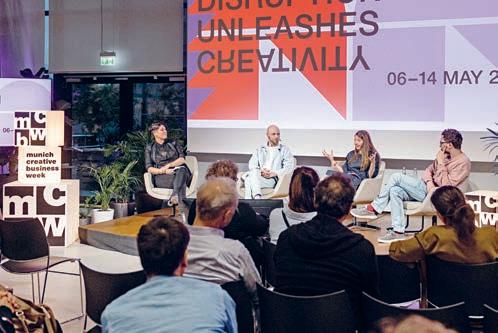
Nine vibrant days packed with inspiration, discussion and networking – that’s the munich creative business week (mcbw). With some 150 partners, 200 events and up to 60,000 visitors, it is Germany’s largest design event, and an international window onto Bavaria’s creative and design industry. Launched by bayern design in 2012, the mcbw is an annual meeting-point for creative minds in the fields of design, architecture and business in Bavaria’s capital of Munich, sending the whole city into a veritable frenzy of design.
The mcbw is where we create a place for dialogue, where professionals, designers, companies, students and the interested public come together to connect
and debate about ideas and trends. The mcbw is where we make design come alive, in a wide-ranging program of events taking place throughout the city and extending into its environs, from exhibitions and panel discussions to guided design walks: www.mcbw.de
The mcbw is where we express our beliefs. Presenting recurring themes of social relevance, the mcbw confronts urgent challenges head-on and provides a platform for discussion and debate. As a new annual feature launched in 2023, we invite a figure from the international design and architecture scene to Munich as our Creative Explorer, tasked with identifying inspiring fields of action.
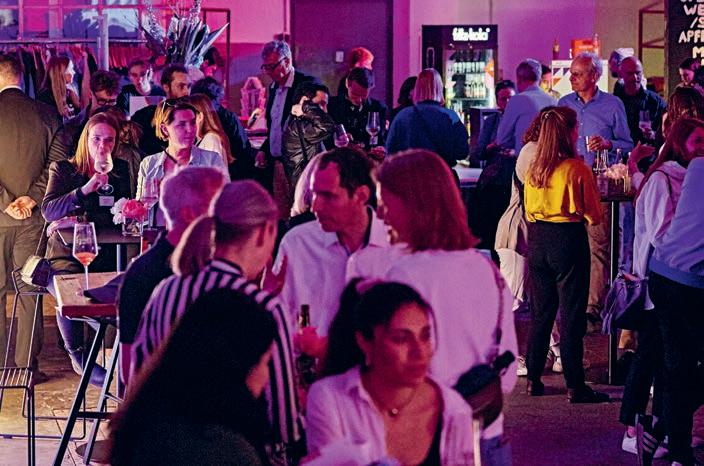
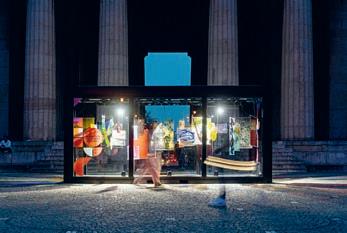
The mcbw offers a platform for all, from global players to hidden champions and start-ups, from agencies and offices to solo freelancers. Active participation is open to anyone with an affinity for design. Incidentally, many of the events have free entry and are open to the public.
The bayern design team at our Munich office is the driving force behind the mcbw. We are a compact, interdisciplinary team of designers and experts united by common passions for design and for Munich. Our team in Nuremberg provides hands-on support.
During the 2024 mcbw, our head office will be in the Ruffinihaus on Rindermarkt. Drop by and see us there – we look forward to meeting you!
Have we moved too far away from nature? These strategies could bring humanity and the environment back together.
In 2020, scientists at the Weizmann Institute of Science in Israel calculated the total weight of all anthropogenic mass – comprising all human-made materials and structures such as steel, concrete, plastic and glass – at 1.1 teratonnes. Their findings marked 2020 as a tipping-point for the planet, the first time that its anthropogenic mass equalled its biomass. However, while the volume of biomass remains largely stable, anthropogenic mass has continued to grow exponentially and now significantly exceeds the weight of all flora, fauna, bacteria, etc. Researchers speak of a new age: the Anthropocene.
Nature is generally defined as everything that is “already there” without being created by humans: rocks, rivers, flora and fauna. A definition with a fundamentally material focus. Other opinions claim that humans have at least had a hand in creating, say, the ocean in its present form (with its acidification, its fish stocks and coral reefs, the changing Gulf Stream and its currents), or forests and mountain slopes. In turn, nature can likewise be said to have a creative power and force: all organisms actively contribute toward shaping their environment. Even “dead materials” (sand, rocks, stones) play a role in shaping the natural world and result in cultural landscapes that can vary as widely as the valleys of the Alps and the Sahara desert
Collaboration, not domination
It is thus high time for a more holistic view in which humans and nature are engaged
in a reciprocal relationship, a mutual balancing act with indistinct borders. It takes us to the threshold of a new era, where we must (re-)learn how to work with nature, accept nature as a co-creator, and live and grow alongside it without seeking to regulate it. We must learn to understand nature in a host of different roles: as teacher, as beneficiary, but equally as co-creator and even result of a design process. In the future, we will need to design fewer objects or spaces and more behaviors and processes, while framing viewpoints that make our world into a future-facing place worth living in for all – humans, flora and fauna alike.
How can we learn how to develop more efficient and more effective methods by drawing on natural processes? How can we devise solutions to protect nature (and humans) so that they also represent an
Design solutions based on nature as a role model. More from page 16
Design solutions that benefit nature and humanity. More from page 24
Design solutions in collaboration withnature. More from page 70
Design solutions that interweave nature and technology. More from page 102
attractive business model, and thus broaden their impact? How can we use the formative power of nature in collaborative innovations that benefit “both sides”? How can we pierce the boundaries between technology and nature and interweave both these areas into new experiences? To reflect these core issues, we have drawn up a list of focus topics.
These focus topics form the four main themes of this magazine, in which designers, artists, architects, entrepreneurs, engineers, digital experts, sociologists and many other professionals present their considerations of how we can design behaviors, processes and viewpoints that encourage a majority to perceive nature as a worthwhile – and, fundamentally, as the only relevant – goal. Our creative explorer Stefano Boeri gets the ball rolling.

Professor Stefano Boeri explains why nature enriches our cities.
Stefano Boeri is mcbw’s Creative Explorer for 2024. Every year we seek out pioneers that embody our lead topic in their dedication and commitment, and take our society forward. Boeri is one of those pioneers. The multiple award-winning architect and urban planner is one of the world’s foremost visionaries in sustainable building. He directs his gaze at creating a new balance between the built and natural environment.
OLIVER HERWIG
It seems like yesterday. But the Bosco Verticale was actually completed ten years ago. It changed something. Was it a kind of revolution in the field of architecture that you started back then?
STEFANO BOERI
I don’t know if it was a revolution. It was an attempt to consider leaving nature as an essential component of architecture and not simply as an ornamental decoration. And to face with the intersection between living nature and artificial buildings, not only from an aesthetic point of view, but also considering the possible advantages of the cooperation of the two spheres, living nature and artificial buildings.
OH
The green curtain you created has several advantages.
SB
Sure. In terms of capacity to absorb CO 2 , reducing heat, saving energy and capturing fine dust, implementing biodiversity, collecting water and also promoting substantial physical and mental health.
The vertical forest in Milan was a prototype, an experiment and we are still studying ecosystems to adopt them to different cli -
mate conditions as they consist of different living species: not only humans, but also trees, birds and ... We consider this experiment the starting moment of several other experiments that we are developing, a group of buildings very different from each other.
OH
You have constantly developed the original concept further. Are there already some conclusions that you can draw from the line of development?
SB
We have built 12 vertical forests in different parts of the world, in China, Holland, Belgium and Italy. There are nine in construction, and we have designed more than 40 vertical forests for different parts of the world. New versions show also new combinations of living nature and artificial buildings. Such variations allow us to relate the vertical forest to the specific climatic conditions that prevail in different parts of the planet.
OH
What is your starting point when you design a vertical forest?
SB
The first step is to consider the climatic conditions, the second step is to select the plants, especially indigenous plants. Only at that very moment we start to
design the buildings considering the space that every tree, every plant, every bush should have in order to grow. It is a sequence of steps that produce very different results in terms of architecture. We have tried to make this typology more efficient. And more affordable, which was the main challenge, reducing the cost of construction. Thanks to prefabrication, the vertical forest is now fit even for social housing. Compared to the Milan prototype, we have reduced the construction costs by half. Another aim was to make these buildings more sustainable considering the consumption of energy. So, we are trying to enlarge the surfaces with photovoltaic panels and work with geothermal energy as often as possible. The organic facade actually reduces the heat on the façade in summer by some 30 to 45 degrees. The microclimate created by the trees and the plants is quite important. We also introduce wood in the construction process and use the prefabrication of wooden panels to reduce CO 2 emissions and speed up the construction process. We also spend a lot of time reusing water and using rainwater. Water management is becoming crucial.
OH
You have planted around 900 trees in Milan, which must be very well looked after. Do people really look after their trees?

SB
To be honest, I initially thought it was important to involve tenants in the protection and maintenance of these green spaces, as not everyone has the ability or sensitivity to respect plants and provide them with good living conditions. So everywhere we proposed a centralized maintenance with sensors distributed over the balconies. So far we have not had a problem at all, not even with plant mortality. Initially, we thought about replacing a certain percentage of the plants, but that didn’t happen. In Milan, we had to replace just five or six plants.
OH
Sounds very efficient, but can’t you expect people to get together and form a community to take care of their trees?
SB
I totally agree. But when you have invested so much in the idea
and in the construction process, there comes a certain moment when you have to leave b ecause the building has an autonomous life. Sometimes, you are not even allowed to contact the tenants or to interact with the property. In Eindhoven, for example, we have very good relations with many of the tenants, young tenants, and we know that some of them are introducing new plants, sometimes even marijuana plants.
OH
I was wondering if you were ever inspired by, say, etchings of Roman ruins overgrown with trees ...
SB Absolutely. When nature comes back it is capable of recolonizing artificial environments. It produces a combination that is quite similar to what we try to do, introducing a new environment and a new landscape. There is a

tower in Lucca that was an important inspiration for me, the Torre Guinigi, an amazing tower from the 13th century, made of bricks with a bunch of trees on the top. It was very important to us that we didn’t invent something impossible. There were also other inspirations from different fields, like Joseph Beuys suggesting that the metamorphosis between artificial and organic could become political. That kind of provocation was very important. There was also Italo Calvino and his “Baron in the Trees.” For me, the tree was very personal, very important and very influential. Just like Saint Francis and his Canticle of Creatures 800 years ago. Or Buddha proposing the same kind of intersection between living nature and the human sphere. Well, we are not doing anything new. We are simply trying to bring back nature to what we have done. The fact that we only made our habitat out of minerals was probably a serious mistake. We have understood
that. And now we are trying to return to a different state between the two spheres.
OH
Do you also question modernism and its idea of progress without any regard for nature and ecology?
SB
It’s true, I think that’s what modernism is all about. But it’s so difficult to correct this concept of a kind of binary between nature and the artificial, between nature and culture, between nature and cities and forests and cities. We have done our best to expel nature from our bodies, homes, houses and cities. And, well, at a certain moment, we understood that this was not the right solution. We just learned from Covid that a tiny microorganism is able to change our lives. In the future, we must consider coexistence and coexistence with other living beings, no matter how challenging this may be.
OH
How would you describe your personal relationship with nature?
SB
As quite normal. Ever since I was a child, I’ve had an obsession with trees, not with nature in general. Trees are amazing. They are a universe of individualities. In a forest every plant, every tree has its family, its roots in the past, its individuality, its intelligence and sensitiveness. A forest makes up a universe of varieties. From that point of view, this is a parallel between us humans and trees. Now we have to learn how to bring trees to our cities.
OH
It’s very interesting that you compare trees with people. Would you also compare trees and architecture and a forest with a city?
SB
Absolutely, because when we see a city, we see it as a compo -
sition of a variety of buildings and cultures of inhabitants, and there is the possibility of creating a community that belongs to the same environment. And that is more or less what you see in a forest. You see the variation of colours and proportion. Sometimes trees grow vertically, sometimes they expand their branch horizontally. Then you sense that this is a universe with common conditions, that we all have the same meteorological and physical conditions. So I think the analogy is absolutely fruitful.
OH
In one of your interviews, you stated: “Cities are among the most important protagonists of global warming.” Do we have to change the way we build, the way we develop spaces in order to respect the nature surrounding us?
SB
Since I started advocating reforestation and afforestation measures 20 years ago, I have been convinced that this is the most efficient, cost-effective and comprehensive way to combat global warming. This is not just about vertical forests. We also need to develop real forests. We need to change the way we eat and consume energy and water. Another very important issue is the question of heat. Shade has
become a scarce resource and almost a privilege.
OH So, this year’s motto “How to co-create with nature” is quite relevant for your work.
SB Yes, co-creation is important. We need to discuss how we can reduce anthropocentrism in our interaction with the environment. That’s an important step that we need to take, not in the sense of giving up our role as, let’s say, a prominent and powerful species on the planet. But to straighten out that role and change our approach. What we should try to do is to acquire the point of view of the other living species, considering their needs, considering their trouble, their concerns and needs. This will help us to safeguard and take care of the entire ecosystem. We cannot simply delegate this to other species. We have to stay on the pedestal because that is where we stand and we are responsible for improving our ability to consider the perspective of others. Co-creation is a result of a process of empathy. Only when we co-create will we be able to put ourselves in the eyes and minds of other species.
OH
Would you call this a spiritual turn in design and architecture?
SB
No, but there are so many thinkers in our field that were considering this notion of empathy – like Patrick Geddes, biologist and architect, promoting the idea of cohabitation between nature and cities, between trees and humans. He was less famous than Corbusier, but not less relevant in terms of producing a new focus on our environment. This spiritual dimension is very well rooted in rationalism.
OH
Are you still an optimist when it comes to our future as a species?
SB
I am optimistic when I see the young generation and their awareness of what we should do. And I am totally pessimistic when I see political decisions related to global warming. I believe that for the future we have to try to look at climate change and social polarization together, because that will be the main issue of the future: inequalities are simply the other side of global warming and the climate environment.
OH
Professor Boeri, thank you very much for this interview.
SB Very much appreciated it. I’m looking forward to being in Munich.
Bioinspired design solutions
Icarus tried to fly – and plunged to his death. Otto Lilienthal completed some 2,000 successful experiments in flights, but eventually he too crashed to earth. Seems that humans can’t turn into birds after all, even when they strap wings to their arms. But as the persistence of the myth shows, engineers have always looked to nature for inspiration. Technical solutions with minimal energy consumption are now more sought after than ever before. Bioinspired design that takes nature as a template means drawing on the biggest real-life laboratory on the planet, which has tested and rejected thousands and thousands of variants over the millennia. The fruits of evolution are rightly regarded as benchmarks. One of the best-known examples is probably the lotus effect. But while the plant’s self-cleaning surface proved ideal for sanitary facilities and kitchens, the solution itself was far from obvious: the self-cleaning effect came not from ultra-
smooth surfaces, but from surface microstructures with superhydrophobic characteristics.
Natural designs are very far from technical blueprints and cannot be adopted one to one. But their underlying methods can. When the disciplines of biology, physics and design come together, they create bionics. Named from a portmanteau of “biology” and “electronics,” the field systematically analyzes “phenomena found in nature” and explores how they can be applied to technical problems of today New bioinspired technologies can be created in a top-down process, where researchers systematically search for analogies in the natural world. One example can be found in tire design; engineers noticed that a running cheetah’s paws spread when they hit the ground,
enlarging the animal’s contact surface. They came up with biomimetic tires based on the same principle. But the design process can also be bottom-up, when general biomechanical principles inspire technical structures and processes. For example, significantly enhanced stability can be introduced to piping by basing its design on the natural structures of a plant stem.
In both these cases, nature is the source of inspiration, and bionics adopts the best tricks from her wealth of ideas. The cross-disciplinary science can be applied to create outstanding products that are both ultra-light and ultra-strong. Bionics “seeks to signpost the path toward the integration of technology and nature, taking aspects into consideration such as the possibility of saving energy and materials. Using natural growth criteria as a basis for ecological design of technological components is no longer a utopian dream,” as zoologist Werner Nachtigall and scientific journalist Kurt Blüchel explained in their 2003 standard work “Das große Buch der Bionik.” Much progress has been made since then. Computer simulations now allow us to visualize the evolution of materials and designs and identify promising variations more rapidly.
Bionic mindsets are becoming increasingly important in architecture and design. Nature is super-efficient, and unceasingly saves energy and materials. A tree only adds material to its branches at the points where external forces could break them. This phenomenon can be precisely calculated. Professor Andreas Mühlenberend, Bauhaus-Universität Weimar, applies natural principles to develop ideal forms – or rather, ideal structures – for objects. The SKO (soft kill option) is used to simulate formative processes, often with astonishing results; a loading hook swells and bulges, a ladder suddenly becomes as bow-legged as a cowboy. Things grow in order to “find more advanced, lighter, more stable and lower-carbon solutions.” But designers did not stop there. Their input perfected co-evolution by introducing formative structural ideas that gave the objects their visual form. The goal remained the same: fewer materials and resources, longer product life. Designers have been sparring over lean solutions like these for over fifteen years; they include Joris Laarman’s “Bone Chair” (one of twelve from the 2007 edition was auctioned at Sotheby’s with a reserve of USD 500,000) and “Gradation and Cube Air Vases” by
Torafu Architects in laser-cut paper, as well as ultra-light pavilion structures which imitate plants without resorting to simply copying them.
Ecological footprint
The “livMats Pavilion” in the University of Freiburg’s Botanic Garden features a bioinspired design. The networks of interwoven fiber structures found in the saguaro and prickly pear cacti are echoed here by a load-bearing structure of robotically woven flax fibers. Flax has similar mechanical properties to fiberglass; a robot places fiber bundles on a winding frame, allowing the building elements to grow with virtually no waste or offcuts. The only concession is a waterproof polycarbonate skin to protect the fibers from moisture and UV radiation. Structures like these combine and consolidate knowledge from a whole array of branches. In fact, the “livMats Pavilion” was designed as a collaboration between the ITECH master’s program at the Cluster of Excellence Integrative Computational Design and Construction for Architecture (IntCDC) at the University of Stuttgart and biologists from the Cluster of Excellence Living, Adaptive and Energy-autonomous Material Systems (livMatS) at the Univer-
sity of Freiburg. The winding process they devised delivers both material savings and high load-bearing capacity. With an area of 46 square meters, the whole pavilion weighs just one and a half tonnes, less than a midsize car.
The world of design is undergoing a fundamental shift towards lighter, yet more stable construction. However, despite all the optimism, bionics is still far from being a sure-fire success. It requires designers to have in-depth knowledge of statics and biology and is thus better served by interdisciplinary teams; in addition, many of its developments are immediately patented. Andreas Mühlenberend is one voice highlighting the opportunity for societal leverage alongside the goal of product optimization. He identifies six “completely indisputable things that will help us progress in ecological terms, namely sustainable energy sources, sustainable materials, durability, repairability, reusability, and sharing.” Thus, what we need are new forms of cooperative economy and social solidarity. If we aim to reduce our ecological footprint permanently and become truly climate-neutral, we will be forced to adopt bioinspired design solutions in the future. Otherwise, like Icarus, we may be doomed to fall.
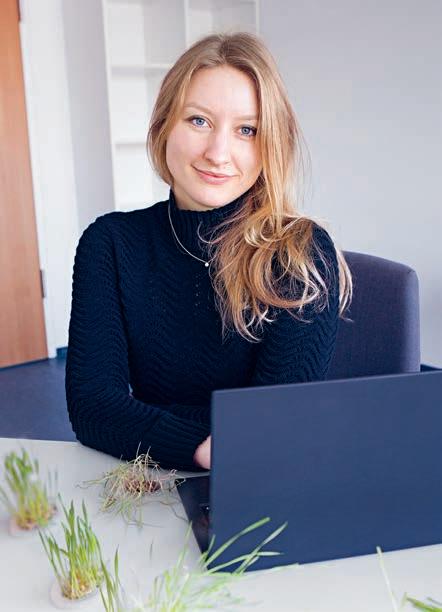
CONDUCTS RESEARCH AT THE FRAUNHOFER IAO’S PIONIERHUB IN WERKSVIERTEL, MUNICH, FOCUSING ON SUSTAINABLE SOLUTIONS FOR FUTURE-FACING URBAN DEVELOPMENT
Nature has had millions of years to perfect its design. What can we learn from it?
Nature provides us with a host of strategies for future-facing urban planning that serve as inspiration for our research. In its complex ecosystems, all materials are resources for other organisms. But ecosystems and interconnections can be established in cities, too, by embracing the goals of recycling, repair and return of waste products to the material cycle.
What are the biggest challenges in this approach?
Collaborating with artists in one of our projects, we realized that areas such as urban food production call for society to adopt a new way of thinking with new processes, technologies and resources, but also give rise to new design requirements. If urban districts are to be self-sufficient in food production, we need to devise creative farming methods. What about, say, hydroponic workplaces, where the desks are surrounded by plants?
So if we really want to learn from nature, do we need to change?
Learning requires a change of perspective as a matter of principle. If we want to integrate natural principles into our technologies and designs, we need to be open to new approaches and reassess traditional ways of thinking. With this in mind, we contribute creative projects to the Fraunhofer Network Science, Art and Design (WKD) with the purpose of developing innovative solutions and debating with the public in participatory projects. We look forward to showcasing numerous projects at the PionierHUB in the Werksviertel district during this summer’s mcbw, and meeting as many visitors as possible to gain new impetus for our research.
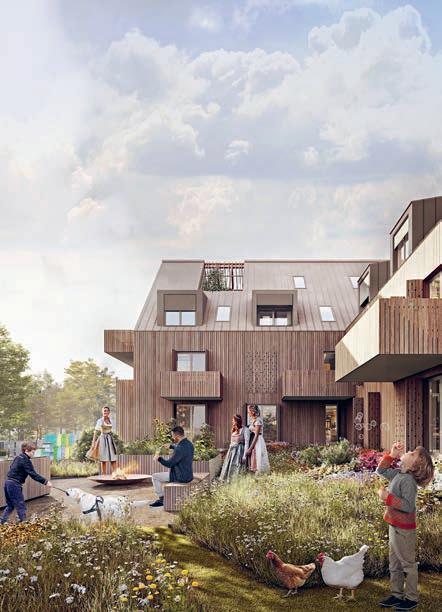
MANAGING DIRECTOR
BHB
UNTERNEHMENSGRUPPE
Where do you draw inspiration from nature?
I find inspiration in the genius loci – the natural environment that surrounds our projects and the cultural landscapes, in forests, moors and herb gardens. I’m fascinated by the wealth of variety in nature; I turn my focus on endangered species like bees, butterflies and glowworms, and marvel at their survival skills. The impressions I take away are then incorporated into my construction projects, including DAS KLEINOD in Munich Riem and FVTVRIA, a local project in Garching, where we are creating biophilic habitats for all: flora, fauna and humans alike.
What can we learn in general from nature?
Nature is our finest teacher of holistic and regenerative design. Sustainability, circular economy, simplicity and authenticity are all things we can learn from nature. For me, that means paying attention to ecology, health, art and social aspects in my planning. More than a house to live in, a habitat needs to be a habitArt, taking nature as a template and based on an overarching socio-ecological concept. Like DAS KLEINOD, our integrated living project in the Riem district of Munich. It has apartments for families, singles and couples in lush natural surroundings that encourages residents to explore, experience and take care of them.
If we really want to learn from nature, do we need to change?
From my perspective as a woman and an urban planner, I believe it’s time to expand our perspectives and focus on the constantly changing natural environment, to understand buildings as adaptable organisms. A building needs to enter a symbiotic relationship with its natural surroundings and its inhabitants, take different lived realities into consideration and develop sustainable concepts for a future-facing way of life. Our pilot project for Building E in Mooritz adopts this innovative approach, which not only aims to transform the construction industry but also, and primarily, seeks to conserve resources.
Design solutions that benefit nature (and humanity)
On the way to planet-centered design: new materials, old technologies.
Of course we’re materialists – or most of us are, anyway. We can’t stop ourselves picking things up, handling them and experiencing them for ourselves in our attempts to understand them. So wouldn’t it be good to be certain we hadn’t just ingested some microplastics or been exposed to pesticides or environmental toxins? This is the dark side of our modern age and all its indisputable successes, which has revolutionized the world and enslaved humanity. The Anthropocene reveals its true face in more than abstract figures and carbon concentrations. There is danger in streams that become torrents, glaciers that melt and microplastics that infiltrate the food chain. So what do design solutions that benefit nature (and humanity) look like? The question is far from naïve; it is directed at how we will manufacture in the future, and thus how we will live. Twentieth-century modernism has led us down a blind alley. We
need to rethink materials and processes, introducing material flow cycles and renewable energies.
But leaving aside the latest buzzwords like “circular economy,” which is currently replacing “ecology” in popularity, how will that work? One fascinating option is to combine traditional knowledge of sustainability and natural materials with cutting-edge manufacturing processes. A (suitably modified) 3D printer can easily handle clay, a traditional material with superb spatial properties. So why not print clay bricks for interior use? mused students at the Canadian University of Waterloo, and produced “Hive” from 175 hexagonal clay bricks. The beginnings of the project were far from straightfor-
ward. Basic research was called for. What kinds of material mixtures are printable, and how must the design and production equipment be adapted to them? A not insignificant goal was to find out whether digital processing of those materials could be cost-effective. 3D printing scored points for its ability to reproduce complex geometries, resulting in a curious phenomenon where digital craftsmanship tapped into millennia-old knowledge and applied robotically controlled precision to create completely new applications, entirely natural and toxin-free. The Canadian interior design project had built a bridge that others could now cross, particularly given that 3D printing had advanced from a niche technology to the heart of production operations. As the most recent Sculpteo survey on the status quo of 3D printing (2022) showed, rapid prototyping was now used by 18 percent of manufacturers for mass production, and by 28 percent for producing consumer goods.
Last November the University of Maine went one step further: its Advanced Structures and Composites Center ( A SCC) used printed wood fiber and bioresin to build a house with around 56 square meters of living space. Known as BioHome3D, it is thus 100 percent natural and fully recyclable. The highly insulated biohouse, created using the world’s largest polymer 3D printer, is hoped to be a medium-term solution to housing shortages; according to the National Low Income Housing Coalition, there is a shortage of around seven million affordable homes in the USA alone. The prototype BioHome3D is equipped with sensors that monitor heat, environmental and structural factors. Data from last winter will help to improve the biohome and perhaps enable series production to launch soon.
But the team of 3D printing and biomaterials offers potential that goes beyond human habitation. Last year, strange, otherworldly structures began to appear in the Hildesheim Amphibian Biotope: delicate, intricate towers and slender buildings on a miniature scale, reminiscent of alien cities. Research project Symbiotic Spaces explores ways of enhancing the urban coexistence of humans and non-humans, and came up with habitats for insects and endangered fauna like the crested newt and yellow-bellied toad, 3D-printed from alumina. The brainchild of designer Joana Schmitz, it was supported by biologists from Hildesheim’s nature conservancy organization and schools biology center. It could soon catch on, setting a precedent for the benefit of humanity and nature.
The shift to planet-centered design (see article about Munich University of Applied Sciences) is going strong. Underlying this movement of change is the realization that we can only survive by abandoning our reductive view of the world around us as a mere source of raw materials, home for infrastructure and garbage tip. The new mindset starts with circular production and ends with new economic concepts that benefit humanity as a whole. And it is spearheaded by a largely intangible, incorporeal object: a search engine. Berlin-based search engine Ecosia is a mere ant in comparison with the Californian elephant that is its counterpart. But what’s so special about Ecosia is that 100 percent of its profits are ploughed into forestation projects around the world, and into renewable energy for its servers. In this way, over 20 million
users have planted around 185,000,000 trees. Virtually, of course; nobody actually picks up a shovel. Ecosia’s advertising highlights its protection of privacy, transparent business operations and climate-neutral production. With these advantages, the start-up is a blueprint for the often-hailed “new economy,” directed at the common good, participatory, transparent, sustainable – and sounding almost too good to be true. But Ecosia homes in on our need for convenience. Changing from our usual search engine couldn’t be simpler or more straightforward. One click, and it’s done. Surfing with a clear conscience, every click a seedling. This is where we can experience the transformation of our economy and our treatment of the planet and its human inhabitants.
If we genuinely want to become climate-neutral by 2045, that goal will not be a single finishing line, a single tape to breast. It will be more like a marathon, like the eternal consequences of mining: if we switch off the pumps in Germany’s Ruhr region, its cities will drown in the rising groundwater. Yet the transformation is already in full swing. So much so, in fact, that it is occasionally overlooked. “Based on the technologies of today, the annual energy consumption of all battery factories planned worldwide will reach 130,000 gigawatt hours by 2040. That’s roughly equal to the annual energy consumption of the country of Sweden.” Peter Carlsson, CEO of Northvolt, was referring to “the biggest industrial transition of our lifetime” and described the winners as the ones who attract the necessary capital, recruit the best people and have the best plan. Seeing the big picture is part of this. Because transformation is a task for the whole of society – indeed, for the whole of the planet. A task for idealists and materialists alike.
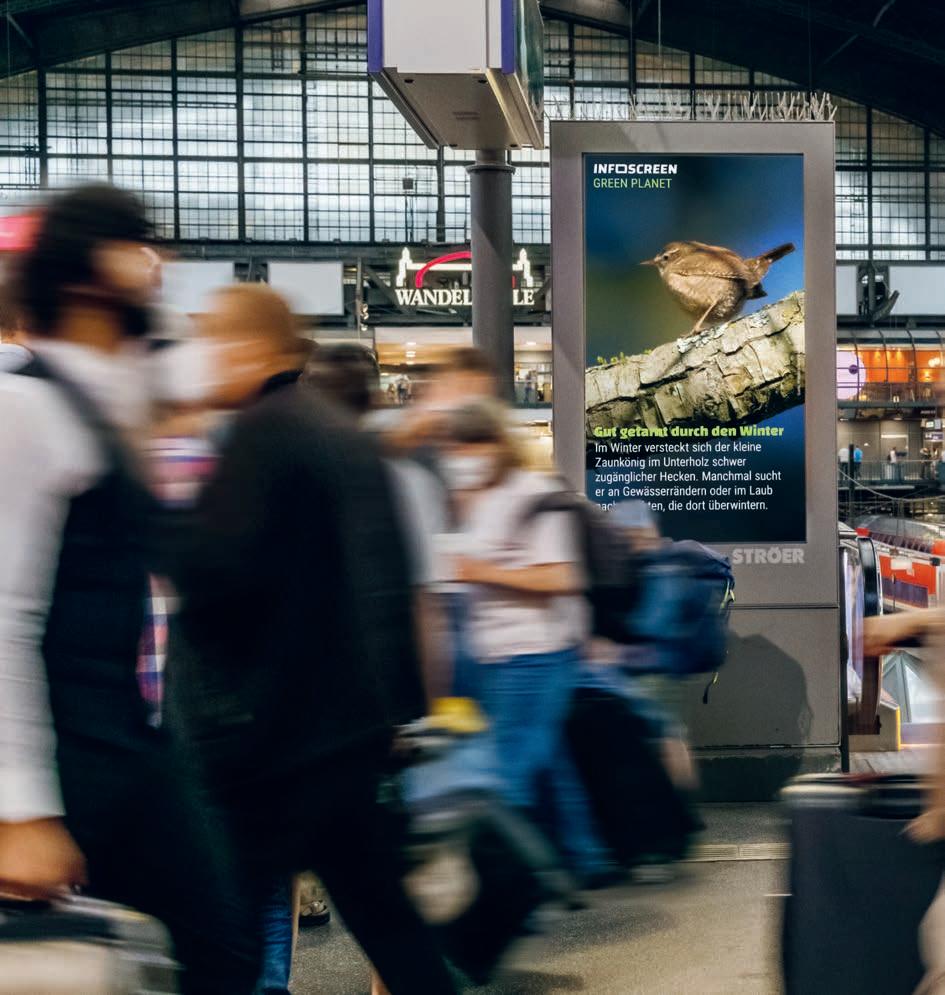
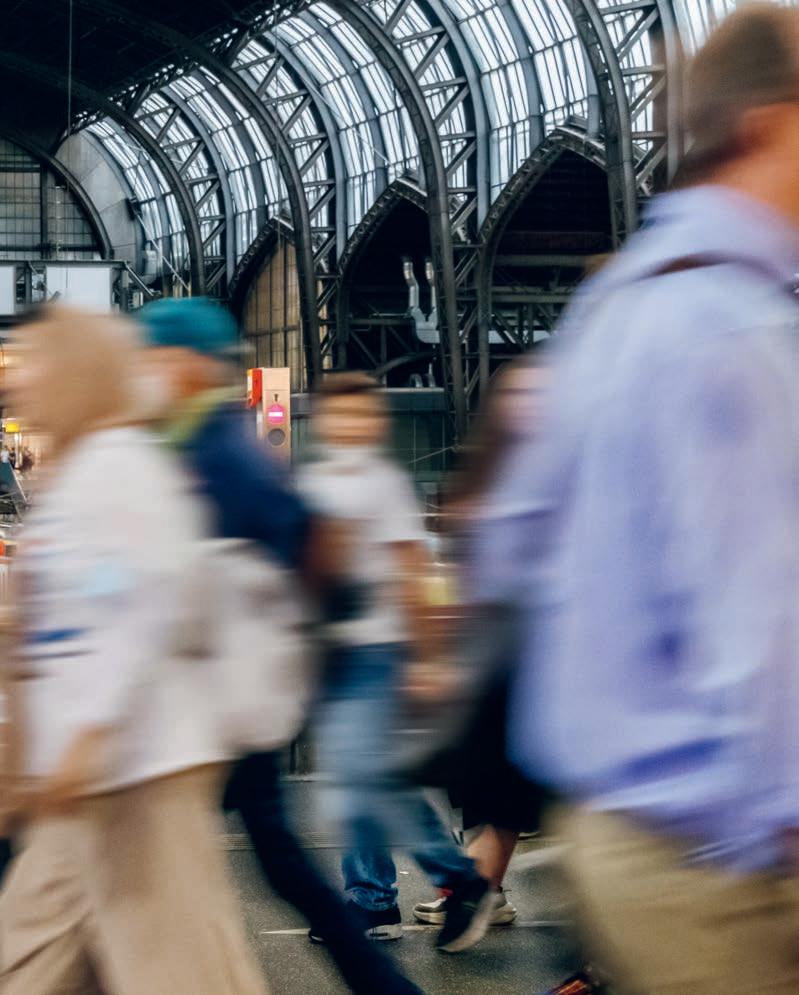
Alexander Stotz, CEO of Ströer Media, presents the digital city of the future. It is diverse but, most of all, sustainable.

Alexander Stotz, CEO Ströer Media
OLIVER HERWIG
Why are you an mcbw partner?
ALEXANDER STOTZ
Because we accept responsibility for the public space that we help to shape. Our goal is to align our design to reflect the city and the architecture where it is located, but also the wishes of the people that live there.
OH
So design is part of your process from the outset?
AS
Yes, because we are privileged to occupy valuable space in public places. With this in mind, we align our street furniture closely to its environments. We have always commissioned public t ransit shelters in modern
designs by Hadi Teherani and many others, because design needs to be unobtrusive, if only because of its repeated presence.
OH Does that apply to the content, too?
AS
Posters are still the basis of everything we do. When static images succeed in compressing information into the dimensions of a poster and inspiring images in the minds of the viewers, they express the supreme art of creativity.
OH
You provide advertising for around 1800 public transit shelters in Munich alone. Many moving images are pretty conspicuous.
AS
Moving images are all about persuasion. We launched digital out-of-home advertising in Munich twenty years ago, as global pioneers in the field. Nobody wanted the city to become a Las Vegas, and we were wise to wait for a while before introducing digital advertising to the streets. Only the technologies we now have today can comply with heritage protection requirements and integrate appropriately into their environment. The “bright lights” are no longer so bright, which is also good for energy efficiency.
OH
On that subject, how do the carbon footprints of, say, posters and screens compare?
AS
Let’s take the example of a poster lightbox in 9-m² format. It has a carbon footprint of around 55 grams of CO 2 per 1000 contacts, which is very good. Cost per thousand, or cost per mille, is the standard unit of calculation in the advertising industry. So a daily newspaper has the highest carbon footprint, with over 9000 grams. Online advertising has emissions ranging from 13 to 284 grams of CO 2 , depending on the format. TV has 828 grams of CO 2 , but radio has only 69 grams. And digital out-of-home advertising operated on green electricity has a carbon footprint per thousand contacts of just 5 to 6 grams of CO 2 .
OH
How does that work?
AS
It works because we’re not a broadcasting station, but we have many, many contacts –400,000 contacts per day at Munich’s central railway station, for example. This optimizes the energy efficiency per contact. In addition, we spent five years developing our own energy reduc -
tion methods, and succeeded in significantly cutting our consumption.
OH
And you did this by …
AS
... working on the ion control software that selects the colors in the advertisements. White uses the most power, up to the max. It took many, many small steps to achieve this energy saving. We also use green energy.
OH
What does sustainability mean to you?
AS
We celebrated our centenary last year. So our business model is pretty sustainable. We were already seeking to maximize our screens’ lifespan and proportion of recycled material years ago. The 2023 GreenTech Festival saw the debut of our new bus shelters, which filter particulates from the air, can absorb around 50 liters of rainwater, and create little oases of nature in heavily built-up areas. 40,000 bus and train shelters and advertising pillars can be greened. We have already started the process in Munich.
OH
Is there more that can be done?
AS
Sure. We install solar panels on the roofs to provide 100 percent of the power needed. And we collect driftwood from the Baltic Sea to use for the seating; there’s a small factory that manufactures it.
OH
So transit shelters become energy-autonomous?
AS
Or preferably, generate more than they need, so people can charge their phones or e-scoot -
ers wirelessly. We need to constantly be on the look-out for new connections. Sustainability primarily focuses on ecology, but it also involves social aspects. We aim to become a communication platform that can serve others. To this end, we provide a host of NGOs with their own sustainability window in our program, to inspire people to join in.
Are smartphones in competition with your advertising, or are they opening new doors?
AS
Both. There’s certainly plenty of competition for attention, particularly in the metro – or the subway, if you prefer. But passengers waiting for a train are grateful for the distraction. Alongside classic out-of-home advertising, we are also Germany’s largest online marketing company, so we are closely bound up with the development of the medium.
OH
Visual behaviors are changing.
AS
It’s a generational thing. Five years ago, we might have been asked whether ten seconds weren’t rather short. But look at Instagram today, and ten seconds suddenly seem like a whole movie. We have to be far quicker at capturing viewers’ full attention, especially where young people are concerned, otherwise they’ve already gone on to the next film.
OH
What about digitalization of public spaces? Are we moving in the direction of a virtual world?
AS
Screens can connect the digital and the real world. And those connections are what counts. Advertisers are moving away
from classic product campaigns and addressing topics of social relevance. When that happens in real time, we experience a new dimension of communication that makes the company and its values more accessible. That goes for products and services, but also for recruiting.
OH
Does artificial intelligence (AI) already play a role in your work?
AS
Yes, a big role where it comes to generating neighborhood content – in other words, scanning the Internet. AI eases the workload of people engaged in creativity. And it checks content for, say, religious or political extremism or propaganda.
OH
That could be pretty sensitive. What does the future have in store for us? Will advertisements address us directly by name?
AS
No, but things will become increasingly localized. For example, the restaurant on the corner
could book a screen on Tuesdays and Thursdays from 10 to 12 to advertise its lunch specials, and
quickly take the ad down when it’s sold out. That’s very efficient, including cost-wise. And creative YouTubers can naturally also use the neighborhood in the same way.
OH
And in five years’ time?
AS
Probably half of all media will be digital. I can imagine that in ten years there will only be digital media because by that time, transreflecting displays will have reached acceptable image quality. They only need energy when they switch images, so that they offer continuous communication in real time.
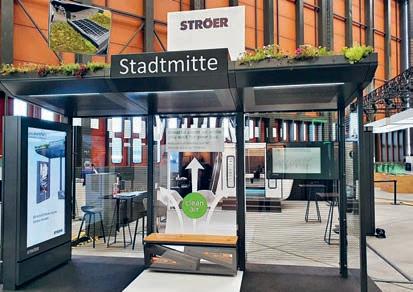

Digitale Außenwerbung ist Information, Plakat, Film, Banner und Soziales Medium in einem. Bundesweit oder hyperlokal, online-gesteuert, extrem skalierbar und vielleicht das letzte Massenmedium. Weil es die Mitte der Gesellschaft in Sekunden erreicht.
How Designworks is combining tomorrow’s mobility with sustainability.


As the water taxi accelerates, a plume of spray rises and the hull lifts out of the water. It glides over the water on three slim foils, which create far less wake than conventional vessels and generate uplift in a similar way to aircraft wings. Named The Icon, this is the first electrically powered water vessel to feature the hydrofoiling principle, which has long been in use on sailing yachts and some passenger boats.
The future-facing solution for water mobility is proof of what can happen when inventors think outside the box and carry innovations from one area over to a completely different one. But that is Designworks’ hallmark.
The 100-percent subsidiary of BMW was founded half a century ago in California and has further offices in Munich and Shanghai. Designworks’ design brief is extremely broad, from lifestyle products to aircraft interiors, digital user experiences and all forms of mobility – including car design for the BMW Group. The company’s three studios are hotbeds of completely new concepts, including hydrogen-powered electric vertical take off and landing vehicles. No ideas are off limits. Quite the opposite, in fact; BMW sends its best designers over to encourage them to develop new perspectives. Holger Hampf, President of Designworks since 2017, has the goal of uniting high-tech
Holger Hampf, President Designworks
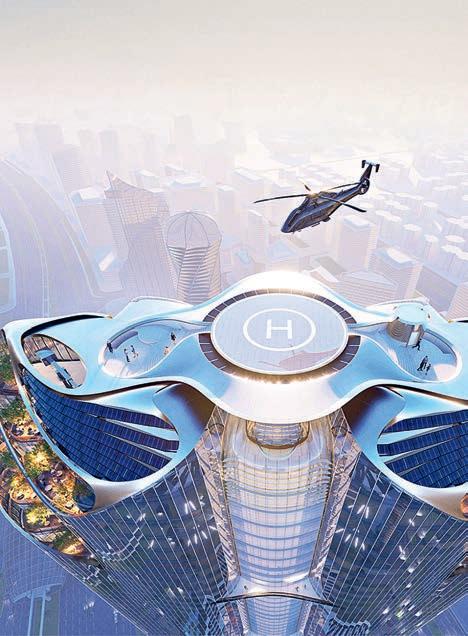
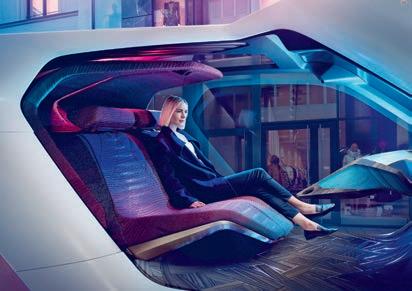
and sustainability to benefit humans and nature alike. Mobility is no longer restricted to four wheels and a driver’s seat. It can now be an app, or part of a logistics system moving goods from A to B. “There’s so much service design behind it, so much systemic thinking.”
Los Angeles, Shanghai and Munich are ideally distributed around the world. But not only that: the locations and their extremely different cultures also bounce inspiration, ideas and market changes back to Munich. Adrian van Hooydonk, Vice President Design der BMW Group, once described Designworks as BMW’s eyes and ears onto the world. In this role, Designworks
need not strive for perpetual growth, but must primarily focus on developing an understanding of the markets and of exciting technologies –in other words, function as an agent for change and a think tank in a rapidly evolving world.
A huge dark panel stands in the conference room at the Munich office, used as a board for jotting down ideas. Holger Hampf grabs a piece of chalk and sketches out two axes of a graph, a timeline and an innovation trajectory. A vector soars upwards at a 45-degree angle, heading directly for a point of maximum innovation in the not-too-distant future –say, around 2035. The aim of all the designers is now to translate this vision into feasible steps that lead straight to that point. The team always keeps these milestones in view. After all, Designworks has the aim of combining technological and esthetically functional ideas with issues of sustainability, “from designing the façade of Africa’s most sustainable building to developing the Sirius Jet, a hydrogen-powered vertical take-off vehicle, or battery-powered maritime vessels with foiling technology,” says Holger Hampf. All this high tech needs technical expertise and a clear eye for the big picture. “We seek not to view nature as a partner, but to perceive ourselves as part of nature. We believe a paradigm shift will be necessary for humanity to be able to advance.”
One possible solution is modular design, in which objects are no longer created as inseparable units, but are separable and repairable. “Modularity offers the opportunity for new and different ways of thinking, particularly in the case of highly com -
plex integrated products.” The building block or kit concept already enables BMW to recycle over 90 percent of its parts and components. The knack is to incorporate design and sustainability goals into the product development process as early as possible, and the earlier the better. From initial vision to brand strategy, and beyond that to industrial production. In Hampf’s view, Europe draws on a trove of big brands, none of which would likely have emerged without the will to embrace rigorous design: “Design needs to understand contexts and take a holistic view.” Hampf thinks in terms of the emotional worlds that surround us, focusing on the “choreography of different experiences or functions.” The task of design is to bring everything together. Climate change shows that holistic thinking no longer stops with the product. The goal is “to design in harmony with the planet and the needs of our environment from the outset,” says Hampf. “Our considerations must address the needs of our environment and of the planet just as much as those of individual users.”
No wonder many projects relate directly to ecology issues – like the maritime vessel mentioned above, which has taken off by using foiling technology to cut around 80 percent of previous energy consumption. Another approach in response to a different task was the electric outboard motor designed for Mercury, where the goal was not to maximize range, but to power low-noise, emission-free shortrange travel on rivers and lakes. Even here, the e-motor represents a genuine alternative to
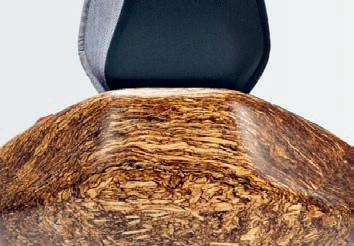
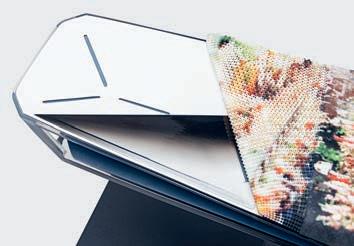
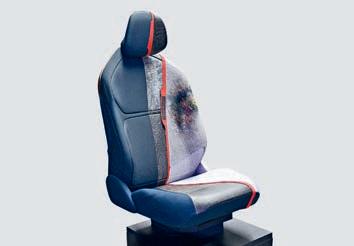

combustion engines. The boat can be charged while moored, or the battery can be removed for charging at home and reinstalled the next day. Many of Designworks’ ideas and technologies work along similar lines. Teams roam from cars to aircraft and back to other forms of mobility, taking in electric wingsuits on the way. Projects in widely diverse areas throw open unexpected perspectives, occasionally also short cuts. The “hybrid designers” working at Designworks do more than create products; they think beyond their boundaries, looking out at the world and identifying points of connection. Wherever modern
mobility is the focus, trains, aircraft and boats must also be part of the picture in order to design, say, an optimized car interior.
One of the most recent Designworks projects concerns “light productivity” on business class flights, when passengers are relaxing and watching movies or listening to music, but may still want to read through papers and answer mails. Knowledge like this can be important in the design of an autonomous vehicle, as can the ability to transfer questions and solutions from one area of operations to another. Hampf says, “We look at everything. It’s not about one single charging point,
one well-designed payment app or isolated product ideas. The goal is to bring everything together into a whole in order to create positive and universal user experiences.” He notes that long product lifespan is still the holy grail of sustainability, citing leather as an example, which even develops an attractive patina over time. However, Hampf warns the material is used too widely and sourcing plant-based alternatives has become vital. Here too, the essential ingredients are technical expertise, an appreciation of tactile quality and, of course, the flashes of inspiration sparked by Designworks’ three very diverse locations.
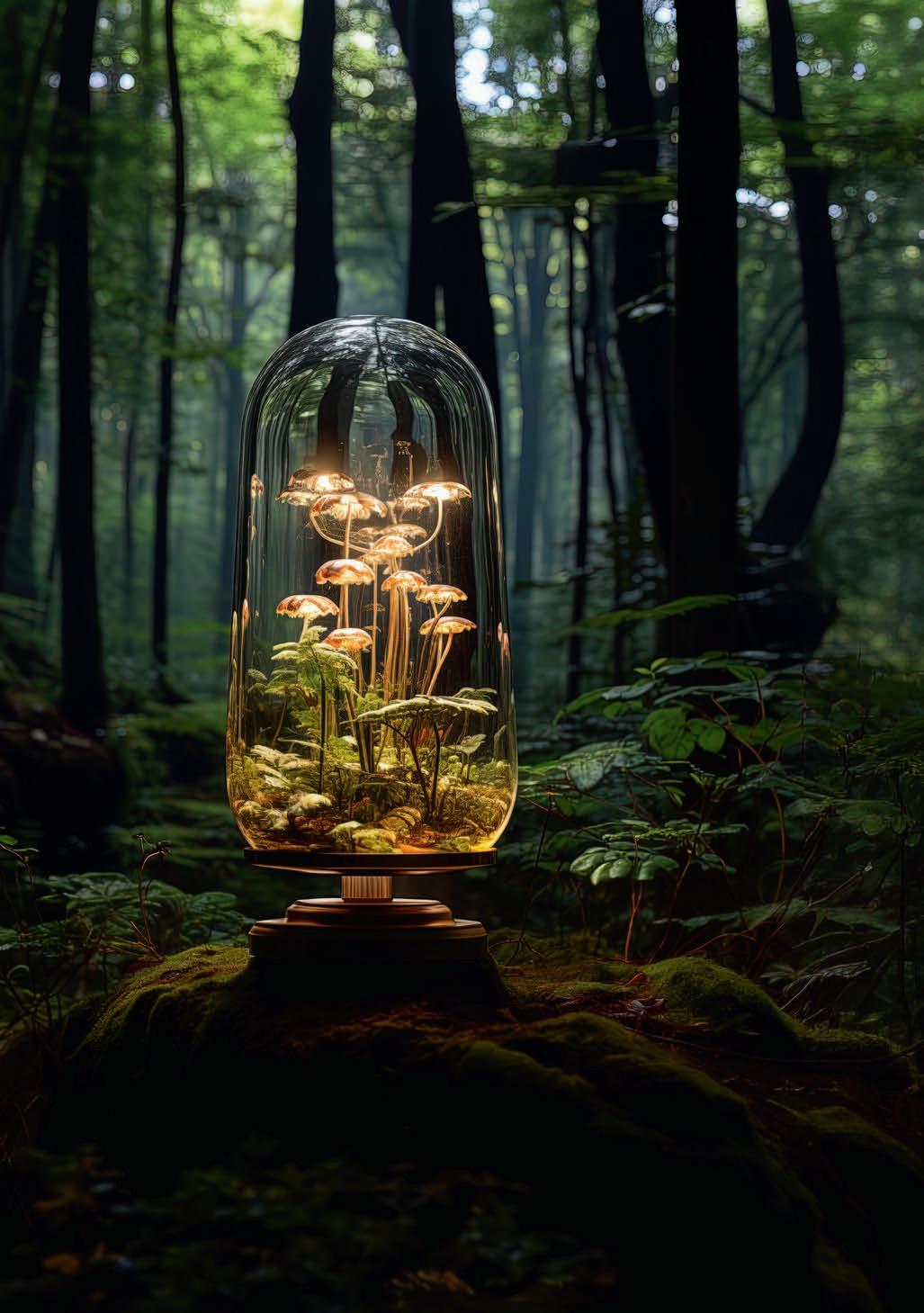

LEAD UX DESIGNER ERGOSIGN
UX DIRECTOR, HEAD OF SITE ERGOSIGN
Is “circular” the new “sustainable”?
“Circular” describes only one aspect of sustainability. At Ergosign, our goal is to design digital experiences that conserve resources, but also have a positive impact on society and company development. We integrate environmental, social and economic factors to create products and services that deliver continuous value added. To do this, we apply a collaborative approach to development that is deeply embedded in our DNA.
Do we need to question companies’ attitudes more closely?
Yes, definitely. Part of our responsibility as user experience professionals is to scrutinize companies’ attitudes to design, technology and sustainability. It’s our duty to foster ethical practices and transparency and to encourage companies to reflect on the impacts of their products and decisions on society and the environment. We achieve this by engaging in non-judgmental critical scrutiny and by visualizing ideas and their implementation in practice.
How does Ergosign overcome pushback against sustainability?
The majority of companies welcome sustainable leadership. Of course, some want to hold onto what’s familiar or long for “the way things used to be,” but others embrace rapid progress. Active listening, conducting surveys and offering co-determination are all ways of reducing concerns, enhancing motivation and encouraging people to come along on the journey. One of our design principles for sustainable development is “Act collaboratively and individually.” A culture of openness creates a framework where like-minded people can come together and proactively generate a huge surge of energy.
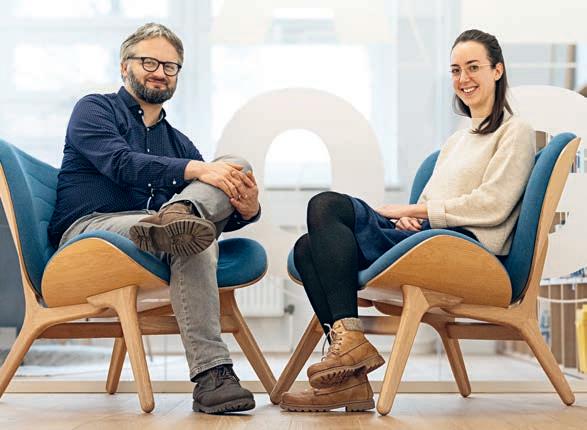
The Design Faculty at Hochschule München University of Applied Science (HM) focuses on design research and shaping the coexistence of humans and nature.
A key topic for the dci: how can cultural patterns be developed to provide impetus for social, ecological, technological or entrepreneurial futures?

Cultural patterns for social innovation are a research topic at the new Design Cultures Institute for Applied Design Research at Hochschule München.
Design research has experienced an upswing in recent years. At the head of the field in Bavaria is the Design Faculty at Hochschule München University of Applied Science (HM). But what kind of research takes place at HM’s Design Cultures Institute for Applied Design Research (dci), part of Bavaria’s state-funded Hightech Agenda scheme? “Cultural patterns make up our main theme,” explains the institute’s director, Prof. Markus Frenzl. “We use design to research cultures of perception, knowledge, action and innovation and company cultures. Our findings then serve as a catalyst for developing new ideas against the backdrop of social transformation.”
The scope is deliberately broad, encompassing perspectives on environmental, economic and social transformation in equal measure. The new institute’s activities will be wide-ranging to reflect the fact that design permeates our entire lives.
Markus Frenzl describes design as “practice that fosters identity and culture with its own culture of knowledge and research.”
Pointing out that culture is not something that can be prescribed, he explains that the institute does not itself drive cultural change; instead it focuses on the phenomena of such change, on the cultural patterns that, when further developed, are rendered “able to make cultural connections and thus lead to new ways of life, manufactur-
ing technologies and ways of understanding.”
Research starts from three main focal areas. The topic of “Participation, Co-Creation and Futures Literacy in the Context of Social Transformation,” for example, links to a master’s project which identified research drivers for the HM: UniverCity project “Creating NEBourhoods Together.” In the project, master’s students surveyed residents in the Neuperlach district of Munich to find out about their living conditions and their desires, with the goal of “working together to design attractive, ecological and future-facing neighborhoods.”
A further research topic, “LESS – Principles, Potential and Problems of Product Avoidance,” explores the role that sufficiency can play in architecture and design. Finally, “Areas of Potential in Bavarian Craft Cultures” seeks to research vanishing craft techniques and expertise in materials and workmanship. Because old methods and traditions have always embraced circular economy principles, they may reveal answers for the world of tomorrow. Bavaria’s history and self-image is thus throwing open fresh new perspectives for products, companies and services of the future.
An undogmatic, direct approach that involves individuals and communicates with founders and institutions offers enormous potential for design research
and beyond. Taking familiar cultural patterns as a starting-point, the dci thus provides “impetus for social, ecological, technological or entrepreneurial futures.” Alongside Prof. Markus Frenzl, the core team at dci is made up of Prof. Dr. Eileen Mandir, HTA Professor of Systemic Design in the Context of Social Change and Transformative Processes, and two research associates.
The institute has an ambitious goal: “We aim to create a vibrant space for thought that will provide a home for discursive practice at the Design Faculty here at HM,” says Markus Frenzl. The new step by HM will thus not only strengthen its design research; it will create space for an element that has always been intrinsic to design: the ability to identify perspectives for the future.

Do living beings need to be useful to justify their right to live?
(project: Angela Stellmacher)

How does design work in times of dwindling resources and soaring temperatures?
A seminar at Hochschule München sets out to explore the i ssue.
“We’re now firmly in the Anthropocene, an age in which humans are significantly influencing the changes occurring on our planet and profoundly impacting the earth by their actions,” explain Matthias Edler-Golla and Florian Petri. Both are professors at Hochschule München University of Applied Science (HM), one specializing in interaction design and sustainability, the other offering a perspective rooted in technical industrial design. Both have years of experience in teaching sustainability-focused projects. “Next Nature Design” is not their first joint course – but may well be their most crucial. It delves into the big picture, asking what purpose design can pursue in the Anthropocene. Can we, should we even continue producing in the way we have been doing? The seminar and subsequent exhibition will ad -
dress sustainability in all its many facets. No question is too offthe-wall, no project too fantastic.
Edler-Golla and Petri challenge their students to push the boundaries of human-centered design. They postulate “planet-centered design, which requires us to embrace new ways of thinking, new collaborations, the willingness to work with other living beings in a co-creative relationship, and the boldness to unite culture, technology and nature.” This big picture could hardly be any bigger. Given this, the professors firmly believe in direct dialogue as the seminar process. However, first of all the students themselves need to become experts. Each team investigates different issues. The 30 photographers and product, graphic and interaction designers work, discuss and design together.

The seminar aims to unlock spaces for creative thought that go beyond considerations of commerce. As Matthias Edler-Golla points out, “We’re not an agency, or an extended workbench for industry. We provide impetus for new ideas in a rapidly changing world.” That is precisely one of the tasks confronting the designers of the future: the need to assess projects accurately and turn them down if necessary, to reach out to people and bring meaning to the processes they design. Matthias Edler-Golla and Florian Petri are well aware that there is no single correct solution; instead, there is a web of mutually reinforcing impetuses. Many different paths are
unlocked in this way. Even lack of knowledge can prove to be a strength when it provokes a questioning mindset.
“Cohabitation” is the name for the new coexistence of humans and nature. Ultimately, there are “only positive visions.” But there is method behind this apparently unrealistic, even naïve notion. The professors explain that anyone can pen a dystopia, but our present age needs new ways forward. Instead of perfect products, which – as they point out – do not exist, they are seeking something more like perfect prototypes, which only unfold their perfection when put to use by real-life humans and the natu -
Who is the hermit beetle? Why are hermit beetles so unknown, and almost extinct?
(project: Angelika Bals and Finja Beck)
ral environment around them. Suddenly, space is opened up for new careers – a carpenter-designer, say, who allows users to try out a range of variations. The role of the designer is currently in flux. In the age of modernism, that role primarily revolved around striking a pose as heroes of progress, many engaged in creating ever-sleeker variations of tomorrow, right down to arrow-swift pencil-sharpeners. But styling alone is no concern of serious designers. They seek more. They seek, as far as their abilities allow, to make the world better – or at least preserve it. To ensure that the “age of the human” does not become the “age of human extinction.”
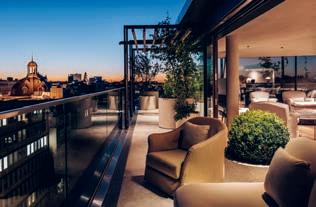




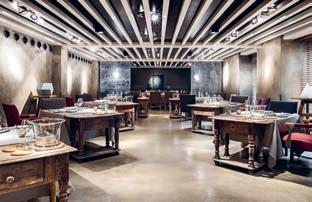


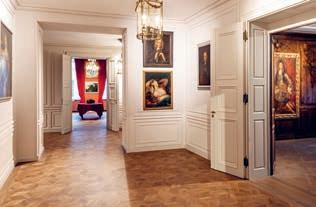

Kai Langer, Head of BMW i Design, takes nature’s efficiency as his benchmark.
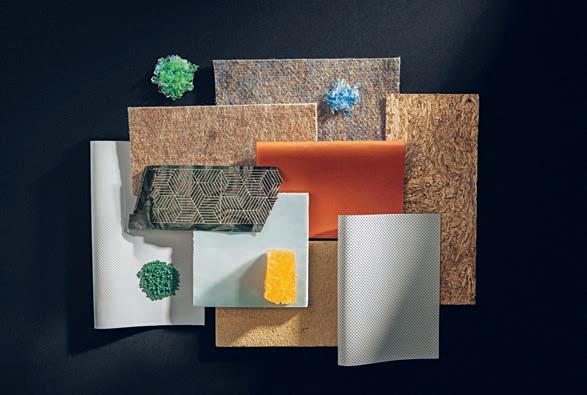

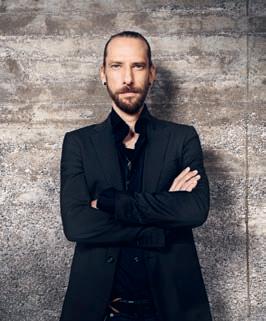
Kai Langer, Head of BMW i Design
From fall 2027, the BMW Group’s historic location in Munich’s Milbertshofen district will switch all of its production over to battery-powered vehicles. This shift in drive systems marks a turning point, and a transformation. But what form should this new future take? If anybody can answer that question, it must surely be Kai Langer, Head of BMW i Design since July 2019. The industrial designer has accompanied the brand’s progress since the earliest stages. Langer has been part of the company for over two decades. A successful designer for BMW for many years, he was already responsible for BMW Group Advanced Design before taking over at the helm of BMW i five years ago.
Kai Langer – dark hair, jeans, black shirt – studied in Pforz-
heim, an elite cradle of German automotive design. Unsurprisingly, he loves to draw. But instead of sketching a few lines on paper, he prefers to map out the large-scale outlines of the future. In Langer’s view, the transformation to sustainable e-mobility extends far beyond mere questions of contours or dimensions. He sees it as a holistic task, a universal concept that starts by throwing everything into question that the automotive industry has spent decades building up: “We need to invent all-new structures, processes, tools and technologies,” he affirms. As an example, he mentions BMW’s radical switch to green energy to power the BMW i3 production operations at its Leipzig plant, the first company to do so. Alongside constructing production halls, BMW set up wind turbines to generate power – at a time where few had any inkling of what that would mean for the existing infrastructure. In addition, a new material, carbon, was introduced together with changes in production processes. The sustainability philosophy that underpins the BMW i3 starts with questions: “How can we supply the production line with green energy? What materials
can we use? We had to work hard to gain people’s acceptance,” recalls Langer. “But the challenge was welcomed by the whole team and the company because it enabled us to define the direction we would be heading in the future.”
Langer has long since made his peace with the fact that he no longer gets to design a vehicle from start to finish. In fact, as he points out, that isn’t even a possibility any more. “When I look at some of the things done by young members of our team, I have no idea how they do it,” says the Head of BMW i Design in a remarkably laid-back tone. “I still enjoy going back to the drawing-board; after all, it isn’t what I do today, but it’s what I originally trained in. But fortunately, we discuss designs in a group to reach the best solution, and that’s my job today. I let myself be inspired by my team, I welcome that inspiration, and I make a decision on that basis.” Langer compares the growth of sustainability with a tree planted by the company and now flourishing,

putting out more and more branches and twigs. Circularity is the key: “We need to significantly shrink our carbon footprint,” says the designer. “Actually, that’s what the whole world has to do. And once we actively accept the responsibility, the company needs to identify the biggest point of leverage.” Closed material cycles comprise one major point. Langer notes that renewable raw materials are already pretty good, but points out it is much more effective to keep everything within a loop, like the well-known glass bottle deposit system. To establish circularity, familiar vehicle designs need to be scrutinized and questioned down to the last screw: “How do I need to separate out the parts to ensure they can be made from material that goes back into the cycle?” Adhesive bonding is a thing of the past. Now the goal is unmixed materials and smart disassembly, approached in gradual steps. With this in mind, Langer waxes enthusiastic about traditional Japanese houses made from wood without a single nail. “Pretty cool! I couldn’t stop examining every single joint of the beams and panels. Crazy! It’s incredible to realize the wealth of ideas,
TRANSFORMATION ISN ’ T
A PROCESS THAT’S OVER AND DONE WITH ONE OF THESE DAYS, IT’S ONGOING
premium-quality craftsmanship and intellectual luxury that are involved.”
Today’s automobiles have to be 95 percent recyclable. Yet the proportion of secondary material – that is, materials that can be repeatedly returned to the materials cycle – is still relatively low. There is definitely more that can be done, says Langer; as a father, he is aware of his responsibility to the coming generations. The bigger the challenge, the better. “Be it sustainability or efficiency, we’re never done; we’re permanently moving towards improvement. Transformation isn’t a process that’s over and done with one of these days. It’s ongoing.” No wonder some solutions to problems feel as insurmountable as a moon land -
ing. At least until the next challenge comes along. And then there’s a whole new moon landing. And a new challenge.
But if everything is in flux, doesn’t that change our view of the world? Our view of what premium quality should look like, feels like? Up to now, perfection has meant that parts which failed a visual conformity test have been scrapped. But Langer takes that as a fresh challenge. He points out that people expect quality to be consistent, “and we want to replicate cars so that every one looks exactly like its neighbor. But that may clash with our sus -
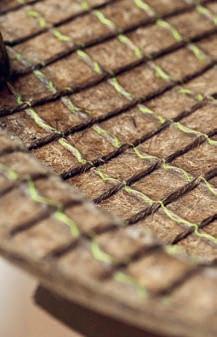
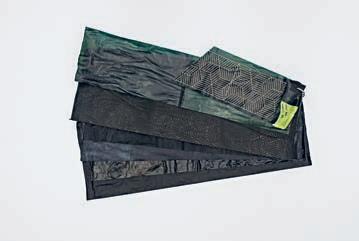
tainability goal of never throwing anything away.” A whole new esthetic can’t be summoned up at the wave of a hand. But what about individual vehicles, in materials that may show unique surface or pattern variations? Like the “Vivid Blue Rubber” tire from a current study? Marble-effect surfaces, say, could create a warm, welcoming feel and inspire emotional connections. In that situation, every part would suddenly be absolutely perfect just as it came off the machine. “It has individuality. Design can make a virtue out of what appears to be a necessity.” Langer’s thoughts take flight. He proposes fully sustainable fabrics for clothing, ultra-comfortable, fun to wear and great-looking, and notes that thinking in production cycles is a return to nature. “We have materials, visionary materials, some of which we can even actually grow, and they look brilliant.” Langer talks about the structure of a snowflake, about the Fibonacci sequence. “In the future, we’ll also be able to create beautifully
esthetic designs from sustainable materials. That’s exactly where development is currently heading.”
Materials that grow? Yes, that’s right. High tech has moved to drawing on nature for its inspiration, because nature works at maximum efficiency. “Up to now, we’ve limited our production technologies to precisely accurate reproduction,” says Langer and enthuses about the 3D printers of the future that will do nothing else than make things grow. “In this way, we’ll progress towards higher efficiency, step by step. For example, we need more advanced printers that run on green energy.” It may soon be possible to print an entire car side panel in secondary aluminum. And instead of shipping spare parts halfway around the world, all that’s needed will be to transmit highly accurate specifications to printers in different continents. It’s like the seed of a tree that floats across the Atlantic, and then finds the perfect spot to start growing.

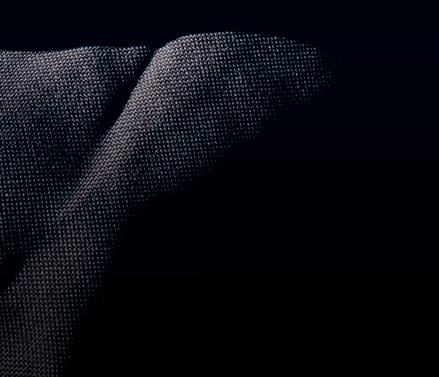

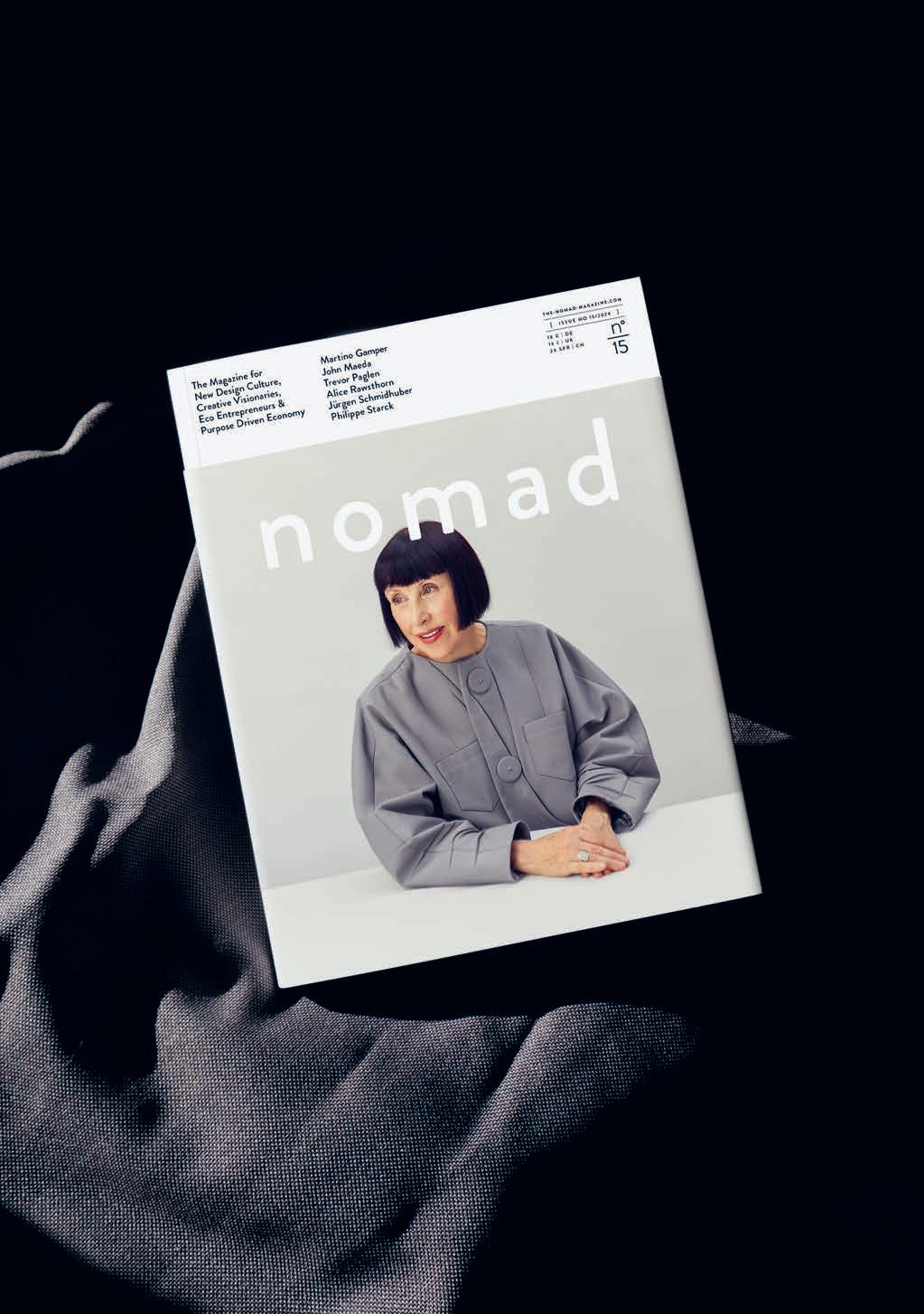
STRATEGIC PRODUCT MANAGER
KISKA MUNICH
MANAGING PARTNER
KISKA MUNICH
What’s your definition of sustainability?
We equate sustainability with long life and minimum impact. To reflect this, we develop strategies and creative solutions for products and brands that are here to stay. Up to 80 percent of a product’s environmental footprint is decided in the earliest design phase, so that’s where we start. Our aim is to make an impact by reducing impact. And long-lasting, high-quality products in timeless, distinctively brand-specific designs are the core of every strong brand.
Is “circular” the new “sustainable”?
It’s returning to the fore in considerations of strategy, product design and product development, and that can only be a good thing. Circularity is an important element of sustainability, but it isn’t the new “sustainable.” “Circular” means that as much as possible is put back into the cycle. This concept encourages brands to develop solutions for their products’ end of life right at the start. But there are many aspects to sustainability, and circular innovations need to be tailored to individual customers.
How is KISKA overcoming pushback against sustainability, both within and outside the company?
With strong strategies and creativity. Good ideas are pretty much invincible. Sustainability isn’t a nice-to-have; it’s a must-have. But unfortunately, it often carries negative associations such as high costs, unfamiliar processes, new materials or strict conditions under the European Green Deal. We remain determined in our quest to signal concrete ways in which sustainability can generate added value for brands and products – while also being cost-effective.
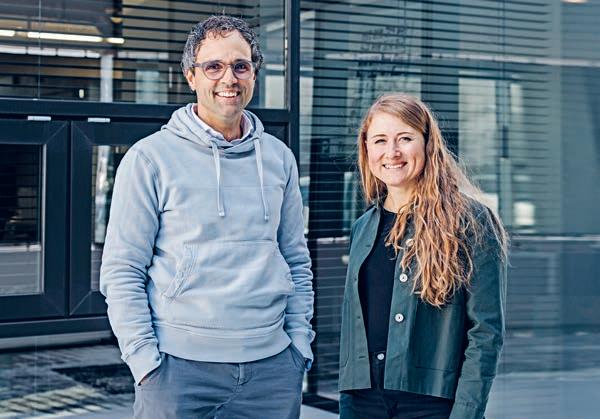
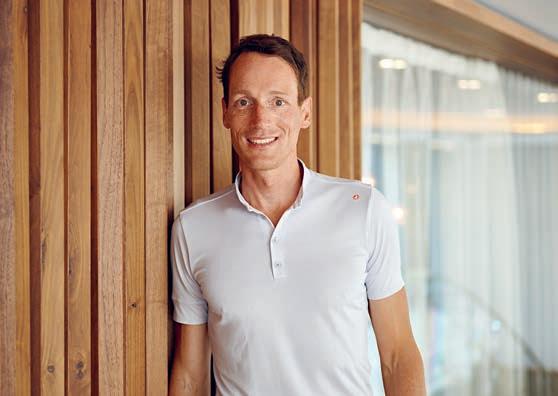
Fabian Mottl, Brand Communications Manager at Steelcase, on sustainable processes and products that benefit people and the planet.
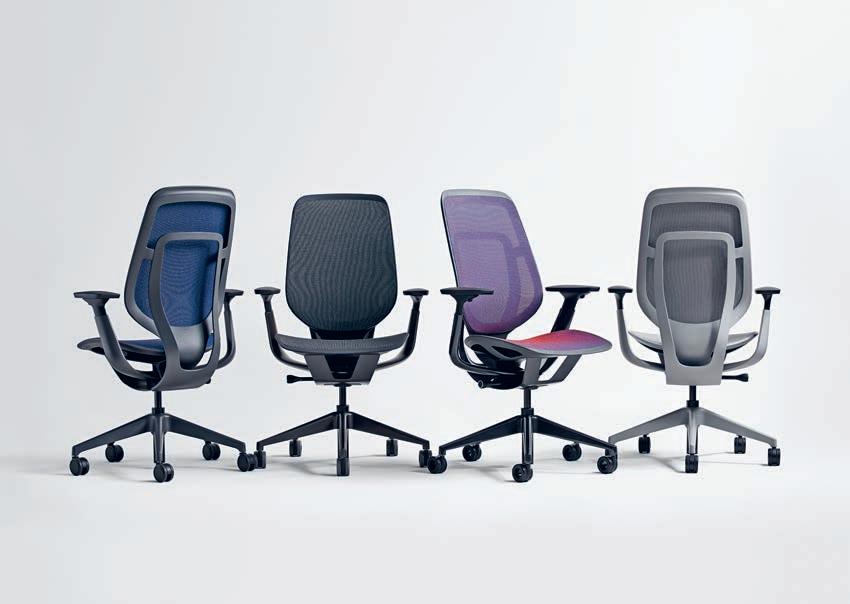
OLIVER HERWIG
Last year, Steelcase launched the Karman office chair. The name alone is an indication that you have chosen to push the boundaries
Yes, indeed. The Kármán line is the boundary between the Earth’s atmosphere and outer space. And the Steelcase Karman also pushes the boundaries. It showcases what can be achieved by steadfastly sustainable design – from development and production to use and beyond. At Steelcase, we pursue a global sustainability strategy that spans product design and manufacture, DEI (diversity, equality and inclusion) and continuing training. We’ve been pioneers of sustainable product design for decades. Our 2023 Steelcase Impact Report details the status quo of our strategies and projects, and outlines our medium- and long-term sustainability goals and targets for the future.
OH
So what does that mean for your products?
FM
Our strategy is embodied in our product families. Our Gesture, Think, Please and Steelcase Series 1 and 2 chairs, the Trivio table, the Island Collection system and the WorkValet locker system are already available with Climate Impact Partners’ CarbonNeutral ® product certification. The most recent of our innovative Steelcase products, the Karman ergonomic office chair, is manufactured from sustainable materials using the absolute minimum of components and resources. This enables us to minimize carbon emissions and pollution.
OH
Where does design reach its limits in our striving to bring humanity and nature into alignment?
FM
At Steelcase, our international team at various locations develops workspace solutions that support millions of people around the world in their day-today working lives. But we can’t succeed in this mission alone, So we work with a host of international suppliers and manufacturers and maintain partnerships to realize our sustainable product designs. To fulfil our sustainability pledge to people and the planet, we focus on six significant areas of impact: Help Communities Thrive, Foster Inclusion, Act with Integrity, Reduce our Carbon Footprint, Design for Circularity, and Choose + Use Materials Responsibly.
OH
On the other hand, where are the limits for your customers? What additional costs are you willing to shoulder in order to benefit the environment?
FM
We firmly believe that all companies and organizations have the responsibility to build the principles of sustainable action into the design and implementation of forward-thinking, equitable workplaces. To achieve this, we use processes that help us to identify people’s various needs and translate them into inclusion strategies while also fulfilling our customers’ requirements.
Perseverance is essential for us to reach our sustainability goals and targets without raising costs or impacting production. Every day we make decisions to keep pushing forward to achieve success. In addition, we launched the “Better is Possible” speaker
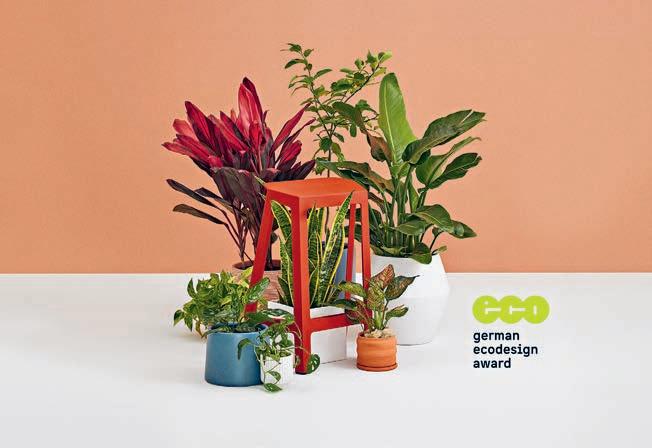
1 HELP COMMUNITIES THRIVE
Our Better Futures Community develops innovative social programs to build equitable access to opportunity and provides financial support.
2 FOSTER INCLUSION
We design spaces, tools and experiences that support our employees, partners and customers in feeling seen, heard and valued.
3 ACT WITH INTEGRITY
We give all our employees the opportunity to represent their values, and are rigorous in how we implement policies that live up to our own ethics and goals.
4 DESIGN FOR CIRCULARITY
We implement impactful reuse, recycling and remanufacturing strategies across our entire product design and delivery process.
5 REDUCE OUR CARBON FOOTPRINT
We work toward and meet more ambitious carbon reduction goals at a greater global scale than anyone in our industry.
6 CHOOSE + USE MATERIALS RESPONSIBLY
We source and select materials that are healthier for people and the planet, and manage resources such as water and energy wisely.
series, where experts share innovative approaches to taking climate action, combating inequities and boosting equality. These talks are extremely popular and also provide our customers with transparent insights into our approach.
OH
Transformation and material circularity are currently cutting-edge themes. Where is Steelcase in this process?
FM
Our philosophy can be summed up as “Designing for Circularity”. This means that from the earliest idea and product development stages, we plan to create a product that factors in the potential for circularity or already draws on material cycles as sources. Like our partnership with Danish textile manufacturer Gabriel, where Steelcase supplies Gabriel with textile offcuts from our Sarrebourg production facility as the basis for sustainable textile production. Gabriel spins the fabric offcuts into new yarn, which thus comprises 100 percent scrap fabric. These environmentally friendly yarns comply with the same quality standards as all other Gabriel textiles. The partnership between Steelcase and Gabriel demonstrates that even waste is a
valuable and recyclable resource that can continuously be put back into the production cycle.
OH
What is your vision for the manufacturing industry of the future, operating production in alignment with nature?
FM
We aim to support people in giving their best at the workplace. How? By designing the best workplace for them. As a twenty-first century company, we need to ask ourselves how we and our products can contribute towards a better future for people and the planet. And our philosophy for the future is “Better is possible”. To achieve this goal, we’re building a Better Futures Community, bringing together our people with international partner organizations to help address the root causes of inequities around the world.

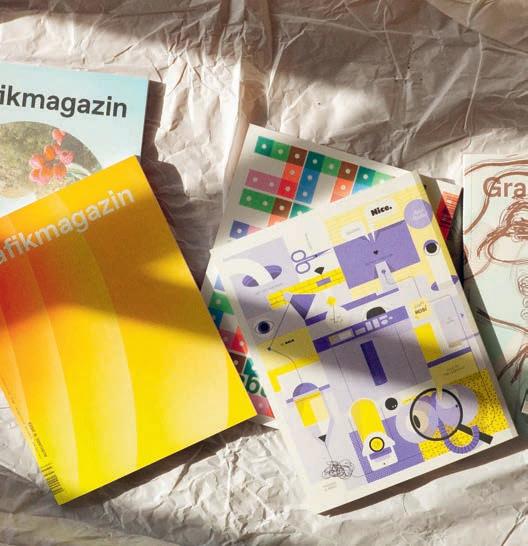


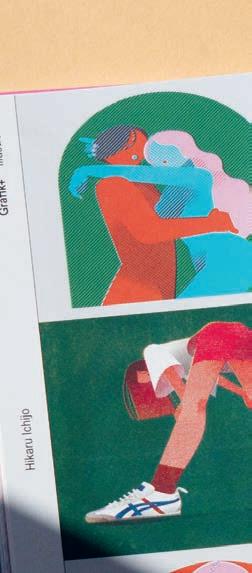
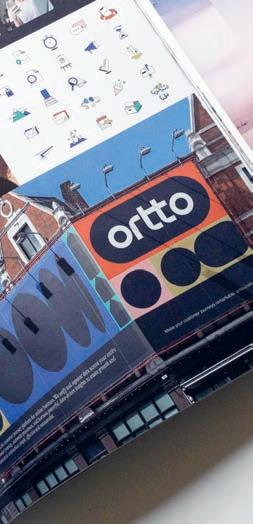

HEAD OF MARKETING & PR KÖNIGLICHE PORZELLAN MANUFAKTUR NYMPHENBURG
How does the Porzellan Manufaktur Nymphenburg define “sustainability”?
Instead of a constant stream of new products, we should continue to use what we have, particularly if no quality concerns stand in the way. Many inherited pieces of Nymphenburg porcelain are now gathering dust in cupboards instead of bringing pleasure in daily use. This inspired us to launch Generation T. The idea for this initiative came from the desire to breathe new life into plates, cups and bowls that had fallen out of fashion but were nonetheless of superlative quality.
Is “circular” the new “sustainable”?
It should be. Unfortunately, people are too afraid to use our porcelain. The finer and higher-quality the pieces, the less likely they are to see everyday use. And that’s a shame! In Generation T, inherited or second-hand items of Nymphenburg porcelain can be painted with designs by Hella Jongerius. Their desirability restored, they can once again return to their original function as tableware.
What kind of materials have a future?
Materials that were designed to last a lifetime (and beyond). Generation T is an initiative by Porzellan Manufaktur Nymphenburg and designer Hella Jongerius to counter the waste of precious resources, both material and human, which are becoming increasingly valuable in the porcelain manufacturing process.
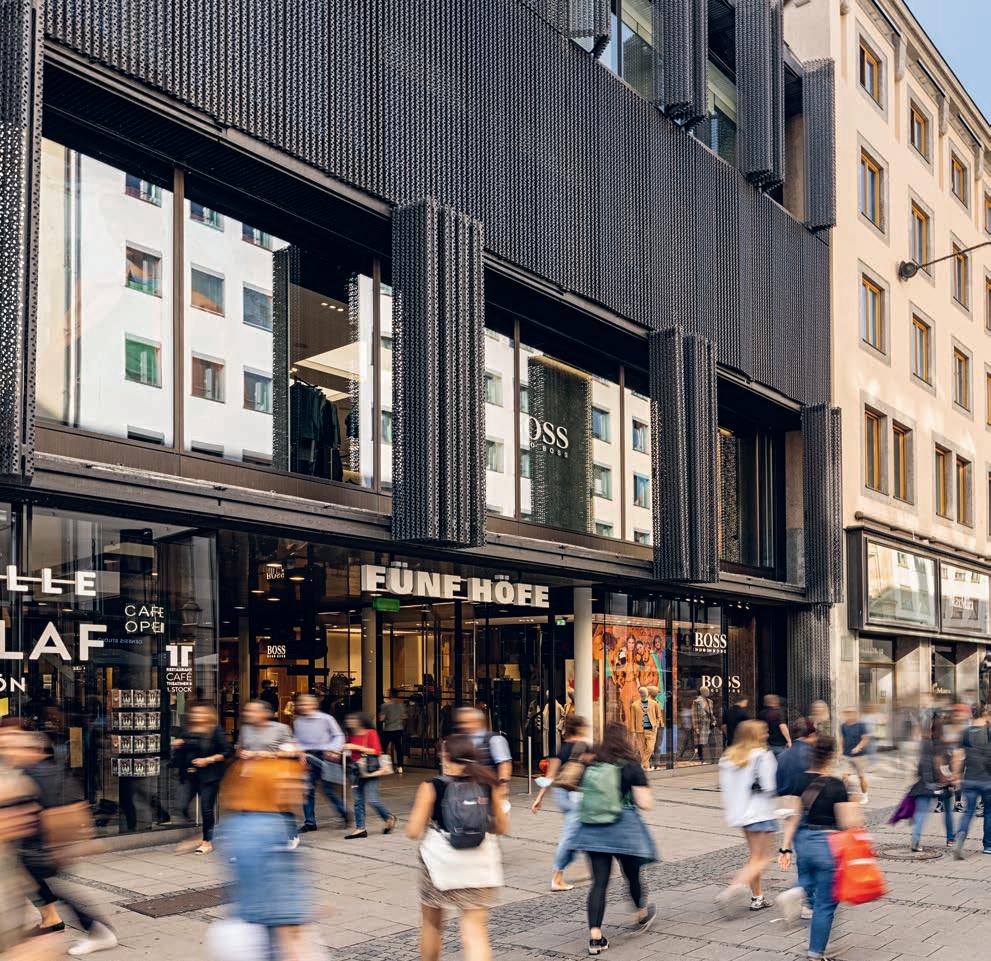
The FÜNF HÖFE have been in existence for 20 years. Center manager Katja Köpf explains the CityQuartier’s recipe for success.

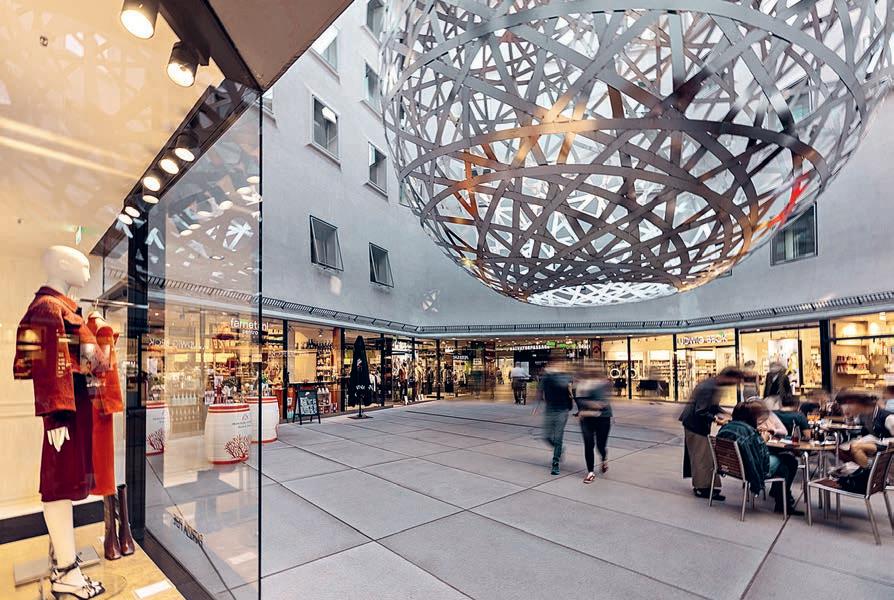
Owned by Union Investment and Hypo-Vereinsbank, the FÜNF HÖFE (Five Courts) are a unique and richly diverse ensemble at the heart of Munich. Katja Köpf, Center Manager FÜNF HÖFE, explains the unusual concept: “We’re not a classic shopping center; the name we prefer is CityQuartier, because this combination of architecture, art, retail, medical practices, offices and residential properties is pretty unique.” Could this be a blueprint for the city centers of the future? Even before its official opening in 2023, the quarter had already achieved a phenomenal pre-occupancy rate of 96 percent for its stores. Katja Köpf still prefers to sign ten-year contracts, “because we want to give our customers reliability. No pop-up stores, no overnight handovers. High customer loyalty is our bread and butter,” says
the manager. And her concept of exclusive stores, design and specialist consulting is certainly successful.
Amid today’s speculation about the future of the department store, amid huge vacancies looming within our cities, amid calls from retail experts for more events, personalized contact, special experiences and, of course, special restaurant and bar ideas, the FÜNF HÖFE has always led by example. Was it luck, or brilliant strategy? “Brilliant strategy, of course!” laughs Katja Köpf. “But luck always plays a role in how well the plan goes down with customers.”
The majority of the 65 retailers and restaurant operators in the courts have been there for two decades, among them flagship stores of well-known companies that were eager to set up shop in Munich and specifically sought out the FÜNF HÖFE, but also bars and cafes that are unique

to the quarter. The courts have their own characteristic charm. “We’re a community, and life here is like a big family where everybody knows everybody else,” enthuses Köpf. Size is also a significant factor in the success of the FÜNF HÖFE. Not too small, not too rambling, they first and foremost provide a colorful mix of stores on a single level. As Katja Köpf points out, nobody can get lost here. “No labyrinthine layout, no moving staircases. It’s all nice and clear.”
The broadsheet daily Süddeutsche Zeitung coined the term “Glitzerkabinett” (glittering chamber) for the ensemble between Maffeistrasse and Theatinerstrasse. The quarter at the heart of the city does indeed glow, and not only at night. At a time when few had the foresight to predict the growth of competition from the expansion of the Internet and home delivery services, the FÜNF HÖFE was already showcasing the art of
shopping. The array of stores combines minimalist design with opulence and magnificence in an atmosphere that changes at every step from courtyard to courtyard, arcade to arcade. Secluded Amirahof with its neat group of trees contrasts with vibrant, buzzy Viscardihof; narrow lanes give way to broad passages. Salvatorpassage, the green heart of the FÜNF HÖFE and almost 100 meters long, features natural hanging gardens that deftly capture a balance between above and below, nature and architecture, while spectators and strollers flock to Viscardihof, whose angled entrance entices them into the world of arcades that makes up the FÜNF HÖFE. The main pentagonal court is dominated by “Sphere,” a work by sculptor Ólafur Elíasson comprising a vast ten-ton ball woven from bands of stainless steel. Art is an intrinsic part of the FÜNF HÖFE. What other shopping mall can claim the same? The ensemble even incorporates the Kunsthalle, a bona fide exhibition gallery with themes that constantly tread the balance between insiders’ tip,

major international attraction and blockbuster. Exclusivity is also a given at the FÜNF HÖFE. Katja Köpf runs down the list: “Multi-sensory shopping experience, personal attention and styling consultants in the stores, partnerships with nearby hotels, and lots and lots of service. That’s what sets us apart from online shopping.” Here too, it’s all about balance – and tone. “The more exceptional experiences I can design that people simply can’t imitate at home, the more customer loyalty I generate and the greater my customers’ appetite for more,” affirms the manager. “Here, I’m thinking of our regular open piano days and tango evenings, our program of events during Munich Film Festival, our partnership with the Bavarian State Opera – and even our selfie point with angel wings during the Christmas season!” The aim is always to spark a thrill. The city’s only private events plaza clearly knows exactly what is expected of it. Not forgetting the changing exhibitions at the internationally renowned Kunst ha lle
München, such as the current big-ticket show “Viktor& Rolf Fashion Statements.”
The Hanging Gardens have become an iconic symbol of the FÜNF HÖFE. “Our lush plantclad arcade immediately draws all eyes. The plants have such a powerful presence, and we constantly incorporate nature as an aspect of our events,” says Katja Köpf. These close ties became abundantly clear in the partnership between FÜNF HÖFE and the 2023 Munich-wide Flower Power Festival, initiated by the Kunsthalle with an exhibition entitled “Flowers Forever.” The connection extends through greened courtyards and roof terraces. “And there’s another special feature,” points out Katja Köpf: “Most malls and shopping centers are only accessible during store opening hours. Not us! From being a closed ensemble of bank premises 20 years ago, our passages are today
open 24 / 7 a nd serve many Munich-dwellers as routes through the city as they go about their daily lives.” The mycelium-like web of passageways and courtyards has discreetly infiltrated the network of the city. And more and more people are using public transportation to get there –subways, light rail and buses. Katja Köpf admits, “Of course there are still people that don’t want to carry lots of bags around and come here by car, but the majority use public transport. Or they cycle in the summer.”
In the 20 years since their opening, the FÜNF HÖFE have successfully combined culture and commerce, living and lifestyle to create a special world of experience. Photographic artworks on the floors and conceptual texts on the walls jockey for visitors’ attention with branded slogans, contradicting and confirming them by turn. The architecture of Swiss star Jacques Herzog and Pierre de Meuron presides over all as its skillful director. Or is it Schumann’s day bar and its guests that hold the throne?
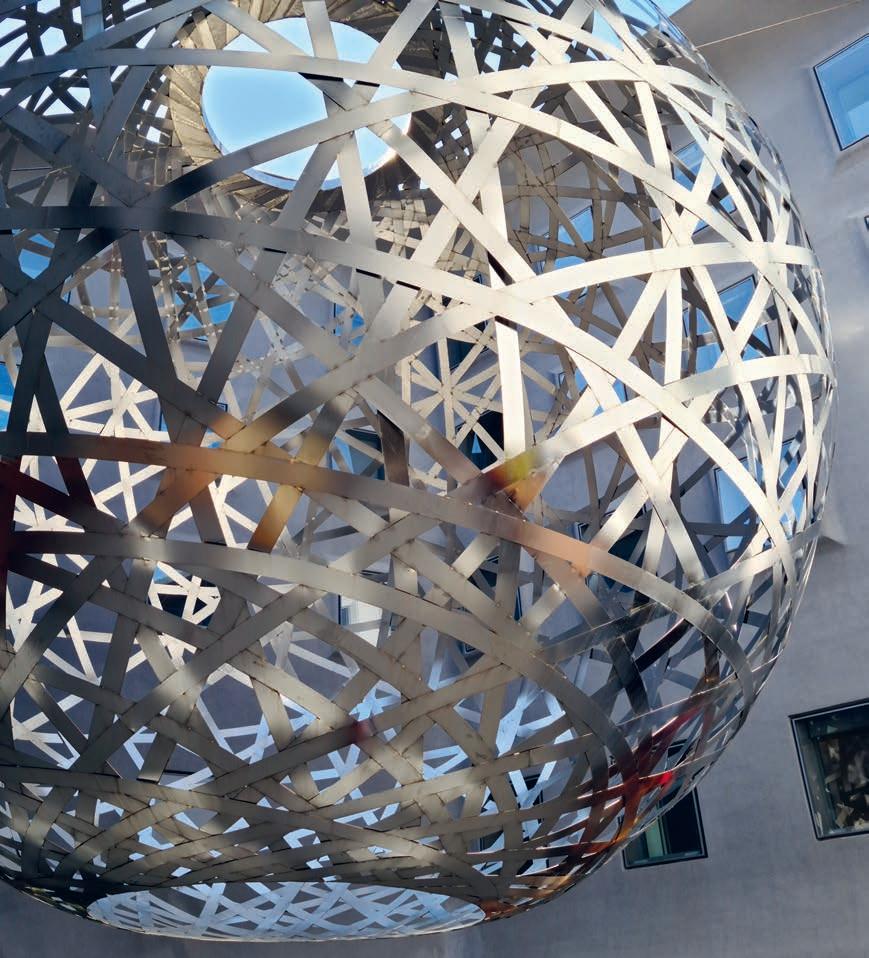
... and architecture are just two of our highlights. We set statements in fashion, lifestyle & culinary delights.
Design solutions in collaboration with nature
Environmental protection is rather like losing weight. Good intentions aren’t enough on their own; they need to be backed up by persistence and long-term goals. As obvious as it sounds, products and services must be created with nature in the future and not against nature, as has been the case in the modernist age. But what does that mean in practice for companies and designers? Do they need to become specialists in natural raw materials, in wool, resin and lignin? And if
we plan to take nature seriously as our co-creator, what’s the position of design research on biodesign and biotechnology? This approach goes far beyond what has been described to date as “ecodesign,” as a “systematic and comprehensive approach to product design with the goal of reducing environmental impacts throughout the product life cycle,” as the German Environment Agency puts it. It is about a new form of value creation that primarily focuses on appreciation.
Change begins on our own doorstep. 2023 was probably the turning-point for the way we build settlements and drive soil sealing. Record heatwaves followed each other in quick succession, and anybody that wasn’t already splashing in the nearest lake could feel the city heat building up and the asphalt sizzling under their feet. Every tree and shrub that offered shade was precious. Green roofs and facades are likewise effective cooling mechanisms, and living walls also filter out airborne pollutants and provide habitats for insects, birds and small mammals. A stable ecosystem can be created by skillfully combining different species. But the global boom experienced by green roofs and living facades has been underway for some time; in the USA alone, the number of greened roofs saw a 16fold increase – and rising – between 2004 and 2011. But the mother of all green facades came about in 2008, when celebrity architects Herzog & de Meuron created the CaixaForum in Madrid and Patrick Blanc transformed it into a vertical garden of 15,000 plants, a carpet of 250 species based on five networks of piping that also served as irrigation systems. Since that time further green beacons have sprung up including the
Eden Tower in Frankfurt, the Rosewood in Sāo Paulo, the Easyhome in Huanggang and, naturally, Stefano Boeri’s Bosco Verticale in Milan. Experts concur that urban greening is an essential ingredient for a future-facing city, and more and more urban planners are assiduously implementing the approach (see our interview with urban planning head Prof. Dr. Elisabeth Merk).
Green cities need green products; particularly since around 770 tonnes of disposable packaging from to-go foods and beverages end up in our garbage every single day according to Greenpeace Germany. It can’t be down to the materials themselves; these days, many containers are reusable and “disposable” cutlery is even edible. The idea behind these developments is always the same: toxin-free, pollutant-free products as replacements for petroleum-based materials. For example, US company Covation Biomaterials developed Sorona ®, a fermented polymer, as a kind of corn-based faux fur that can be used for jacket collars or winter footwear linings. Dutch designers Eric Klarenbeek and Maartje Dros pursued a similar goal, creating a bioplastic from
algae which they cultivated, dried and ground. The resulting granulate was used for 3D printed products such as waste bins and shampoo bottles, providing an eco-friendly production method for the future. In a similar vein, climate-positive construction materials are available that bind more carbon than is emitted in their production.
Silk pavilion
But can these material experiments be taken a stage further – say, by incorporating bacteria or insects into projects directly? Up to a point, yes. Designer Neri Oxman’s work spans architecture, biology and computer and material sciences. Her “material ecology” experiments with ants, bees and silk moths. Two of her Silk Pavilions even featured a combination of digital design and biological production. Neri Oxman was inspired by insects’ ability to spin a three-dimensional cocoon from a single strand of silk. In 2013 she created her first Silk Pavilion, a dome three meters in diameter that was spun over a three-week period by 6,500 silkworms, assisted by a robotic arm. The ephemeral structure straddled the interface of design, interior design and art, and presented a supremely esthetic fore -
cast of the potential for human-nature collaboration in the future. Critics may object that the project still subjugates nature to the human will and the silkworms are no different to cattle or sheep. However, Oxman’s primarily aim is to open up new perspectives and free us from our mental prisons. She is not alone in this, sharing the speculative element of her approach with an array of designers including Formafantasma and Dutch designers Laura Luchtman and Ilfa Siebenhaar, who are using bacteria to dye fabrics – or more precisely, exposing bacteria to sound frequencies that cause them to create patterns on the fabrics.
The large-scale ventures that would make material experimentation on an industrial scale affordable are still lacking. Yet often it is the avant-garde exhibition projects that prompt the shift in our world-view and make us receptive to change.
It is no coincidence that these new developments are taking place at the interface of biology, design and technology. Biomaterials have advanced in leaps and bounds over the past one and a half decades. Together with 3D printing methods, they open up new scope for designers in the transition from a fossil fuel economy to a solar economy.
Prof. Dr. Elisabeth Merk, head of urban planning for the City of Munich, hails the eco-aware city of the future.

OLIVER HERWIG
If you were going to hug a tree in gratitude in the city, which tree would you choose, and where?
PROF. DR. ELISABETH
MERK
It would be a chestnut tree, probably standing where a beer garden meets an open space.
OH So recreation would be your focus?
EM
Yes, and not somewhere in the forest or along the river, but on the edge of a residential area, where people congregate –hence the beer garden. A classic open space, a little green oasis of a kind that is everywhere in
Munich; points of encounter, with a dash of urbanity and some infrastructure. A piece of nature in the city.
OH
There is a public desire for nature in the city, and demands for more green spaces. How has that changed urban planning in recent years?
EM
It’s a very old desire and has always come up as a reaction to urban growth. The issue was always where to locate such a “green lung” in a constantly developing city. Now we realize that we have to create “green corridors” in order to link up larger green areas, and pocket parks
connecting two different open spaces that perhaps already do a good job of fulfilling their function. A vital task for the future involves linking the microclimates in the individual city districts with our urban development plan, Stadtentwicklungsplan 2040. It’s one thing to plan a park or a green belt, but quite another to align processes to new requirements.
OH
Stadtentwicklungsplan 2040 ...
EM
… is digital, and therefore able to depict dynamic elements in urban development, connect them and enable scenarios to be explored. Real estate, even when it undergoes change, isn’t dynamic in and of itself. This is the first time that climate, energy landscape and open space have not been treated solely as professional capital. Alongside the status quo, they also identify areas of potential and risks. You could say that our urban development plan is a barometer of transformation. Siting buildings and developments to improve air circulation and reduce soil sealing is simply better.
OH
What does this involve in practice?
EM
My favorite example is the industrial belt in Steinhausen, the continuation of Prinzregentenstrasse up to Messestadt Riem. It’s shown in purple, indicating that it’s relatively hot and dry and has a lot of sealed surfaces. But it’s also an important ventilation corridor. We can take this master plan for Steinhausen as a starting-point for engaging in a dialogue with project developers and property owners as well as with the inhabitants of the neighboring districts. The planning competition for Frankfurter Ring involved a similar situation. We
look at it in very practical terms: what can we do? We probably can’t save the world at a stroke, but we can certainly introduce major improvements at these specific locations.
OH
How can buildings be connected with nature and sustainability in practical terms?
EM
We already have a pretty good idea of how we can develop something along those lines, as our pilot projects have shown. But there is a need for a project we can implement across the board, in large-scale districts and small municipalities alike. A pilot project for everyday practice, you could say. In addition, we have to make the distinction between existing buildings and new builds. A new build lets me do almost anything, and some very interesting concepts for existing buildings have now been developed. But is greening a façade enough to warrant placing the tag of “ecological” on a building? And how can we start to reverse the upward carbon and temperature curve? These are no mere perceived truths –they are vital for microclimates. A big chestnut tree provides shade. It has an evaporation rate and water take-up that are easy to calculate. But the wellbeing aspect must also be factored in. A greened façade, a small green space or a new tree in an urban district may not have an immediate impact on our carbon footprint, but they all enhance wellbeing. One more is always better than one fewer.
OH
Why is this so hard to put into practice?
EM
Because it’s not so much the costs that are the clincher for investment – it’s the aftercare. To be brutally honest, city-dwell -
RAHMENPLAN - Schritt 1
MOBILITÄT & INFRASTRUKTUR
T Tram Station (in Abstimmung)
B Bus Station Bus Linie
Rufbus Linie Slowmobility Verbindung
RAHMENPLANUNG GEWERBEBAND STEINHAUSEN
& FREIRÄUME
Einzugsgebiet Mobility Hubs Einzugsgebiet Tram
One of the biggest industrial estates in Munich, Steinhausen occupies a 250to 320-meter-wide strip to the south of the A 94 expressway. The heavily sealed site is designated as a long-term industrial and commercial location. However, it is also an important ventilation corridor. Given this, the city is seeking ways of bringing both needs into harmony.
STÄDTEBAU
KnotenpunkteVermittler/Möglichkeitsraum Akzentuierung
Hochhaus Bestand HOCHHÄUSER
Möglichkeitsraum Hochhäuser
Parkmeile Trudering-Neuperlach is one of eleven “Parkmeilen” in Munich – extended “green corridors” that link green areas within the city with the green belt on its periphery. They provide close-tohome recreational opportunities for residents and are also important habitats for flora and fauna.


ers are not exactly model citizens in that regard. Think of all those graveled gardens, which make people wonder what kind of cold-hearted designer would create such a thing. The issue is not only how we can integrate greening into our master plans and properties, or where we can genuinely force action through by means of development plans and statutes. People who are convinced of the importance of green spaces also need to step up.
There’s been a lot of progress in that respect.
Absolutely. All the flowers we now see on balconies or in road verges would never have been possible ten years ago. I’m not too pessimistic in that respect. For me, the prime example is the renaturing of the River Isar, in partnership with nature itself, for nature and for people. We’d like to repeat it in a similar form, as a demonstration of the compatibility between nature conservation, renaturation with leisure and recreational elements, and flood protection.
… are vital at both city and regional level. Agriculture has a big role to play, as do infrastructure requirements. We don’t want to build any more underground car parks simply so that courtyards can be greener. But we’ve already done a lot. The big picture is far more about infrastructure issues – such as energy infrastructure, which is going to be a major concern. You can’t plant trees under power lines. Is it better to address these central questions in a centralized or localized way? I think that will have as great an impact on the future as renaturation did in the 1980s and 1990s.

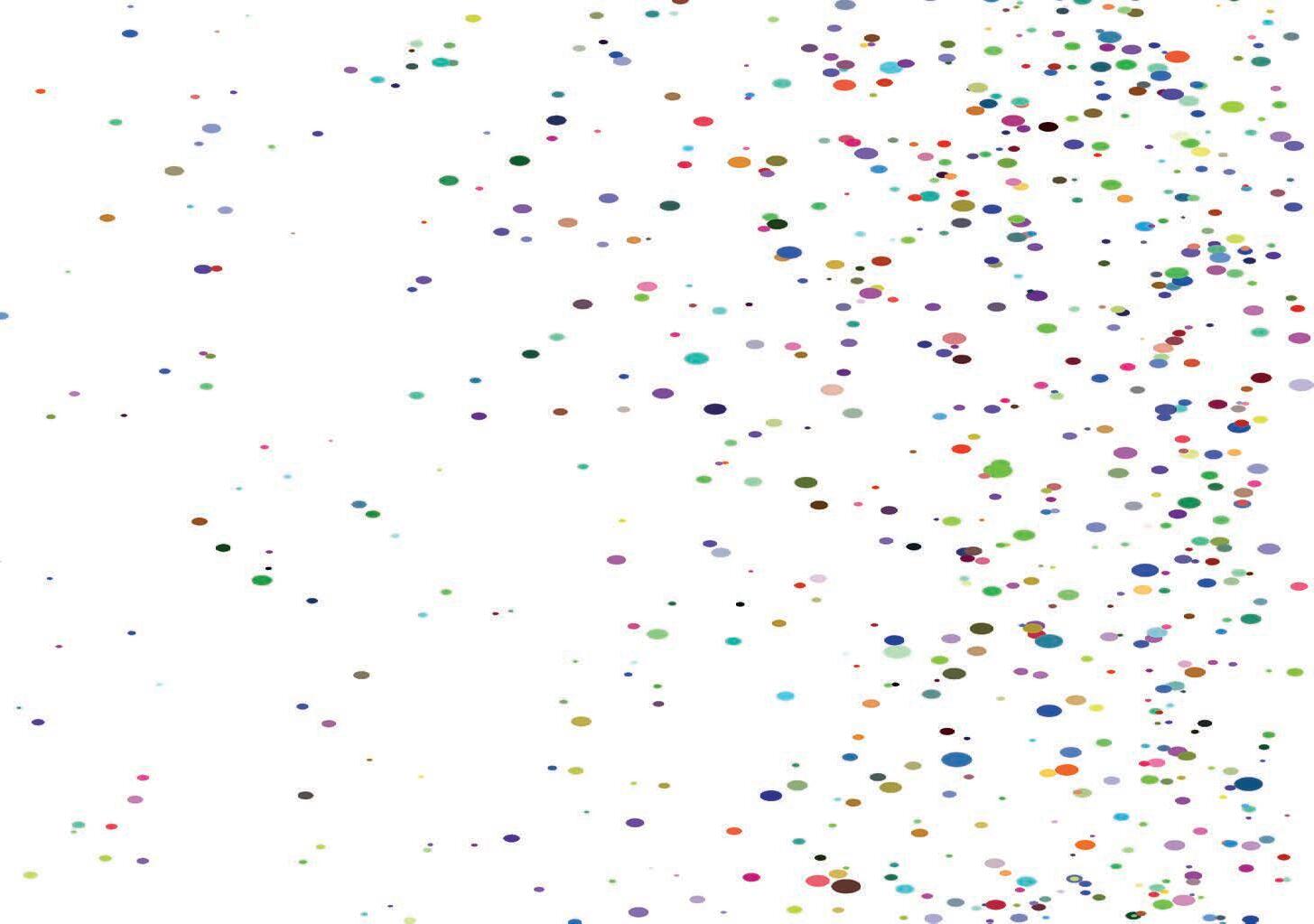
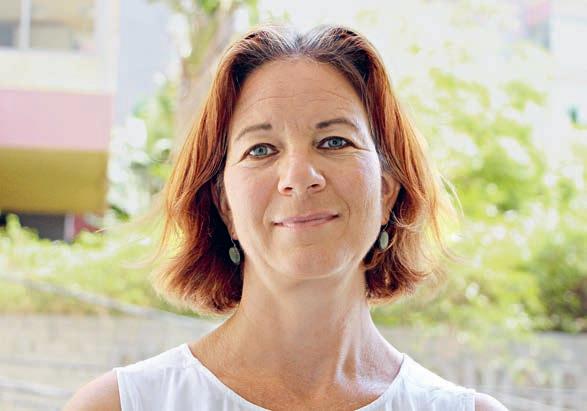
What do we need to learn in order to work with nature?
We need to learn that not everything is available any time, anywhere. We need to step away from deluded ideas of production and growth, and become aware of what is truly necessary. We need to learn that natural phenomena are often unpredictable, and always transitory. As land artist Andy Goldsworthy so beautifully demonstrates, it’s perfectly possible to create design using only what is available.
Do we need to redefine “nature”?
If we see ourselves as part of nature and not as separate from it, we will treat both nature and ourselves with more respect. Natural resources are limited. We have already overstepped the boundaries of nature for too long, because it is technically possible and because we do not see ourselves as part of nature. We are sawing the branch we are sitting on instead of seeing ourselves as the branch. Just because things are possible doesn’t mean they’re necessary.
How will design change if we increasingly move to thinking in terms of material cycles in the future?
Natural materials that grow without human intervention are part of a wastefree cycle. That cycle can be a role model for responsible product design, in which the end of a product is the start of something new. The design process needs to focus on the durability, recyclability and reusability of the materials it uses, adopting them as its fundamental principles.
DESIGN DIRECTOR INTERIOR & EXHIBITION
DREES & SOMMER
What do we need to learn in order to work with nature?
We have no intention of positioning ourselves outside of a natural context. Instead, we see ourselves as part of nature – the part that holds the greatest responsibility. We have adopted the cherry tree as an example of best practice in implementing circular design processes. Just like a cherry tree in full bloom, there are selected cases where we can continue to draw on plentiful resources. But every element, be it ever so small, should have a meaningful purpose and a positive impact.
Do traditional crafts have a closer connection to nature?
Implementing artisan techniques with simplicity and less complexity while also utilizing regional resources is the right direction for increasing sustainability and closeness to nature. We place enormous value on bespoke solutions that are rooted in solid and trusted partnerships with our peers within the fields of design and construction, defining uniqueness in our projects. Using natural materials and creating designs that are durable through their repairability are essential.
What kind of challenge confronts us when we work with nature to develop projects and processes?
What we enjoy most of all is dissolving boundaries, bringing the outdoors indoors, and building connections from inside to outside. If the project allows it, we’ll design outdoor spaces that maintain the same value and quality as indoor ones. It’s just by chance that they are outdoors. Whenever possible, we incorporate pocket parks and large plants into our Fischer table furniture series, with its mobile and super-flexible trapezoid tables and troughs. Both improve air quality and personal well-being. After all, who doesn’t enjoy working in the midst of nature?
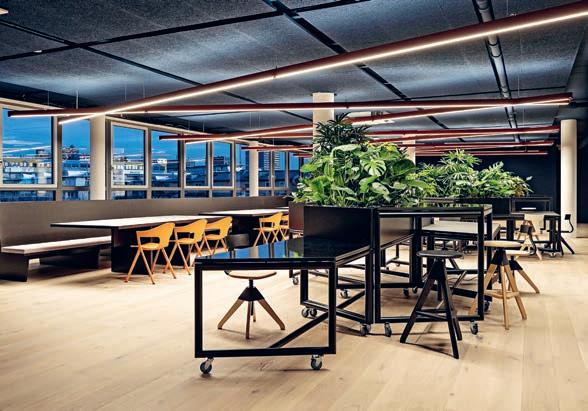
Greenfibra Labs develops customized paper products that are outstandingly sustainable.
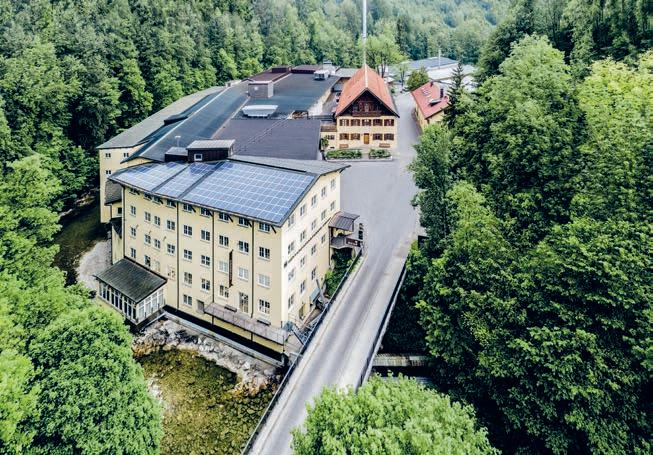
Paper is part of daily life. But it’s also long arrived in the world of high tech. That’s green high tech of course, which combines renewable raw materials to create ever-changing, ever-surprising combinations. Suddenly, paper carries the scent of chocolate or tea, has a rough, textured feel, is edible and bursting with flowers; and there are labels made from grass. The place where this new world of paper is taking shape is Greenfibra Labs, part of Gmund Paper. Project lead Dr. Katrin Kloth-Everding develops special types of paper to order. A solution that is both outstandingly sustainable and outstandingly versatile. “We’re constantly designing new prod -
ucts for our customers, alternative kinds of paper. It’s challenging work, but fascinating.” No wonder. Kloth-Everding, a doctor of chemistry, serves as a researcher, designer and inventor rolled into one and probably has the most exciting career in the entire paper industry. Alongside her colleagues in the laboratory and production facility at Gmund, she is breaking new ground. From fast-growing annual plants like hemp to production waste, her searching question is always “How can we use this to make paper for communication or packaging?” Kloth-Everding’s current favorite is chocolate paper, which is now in its third production run at the company. The
Various fiber samples in the lab
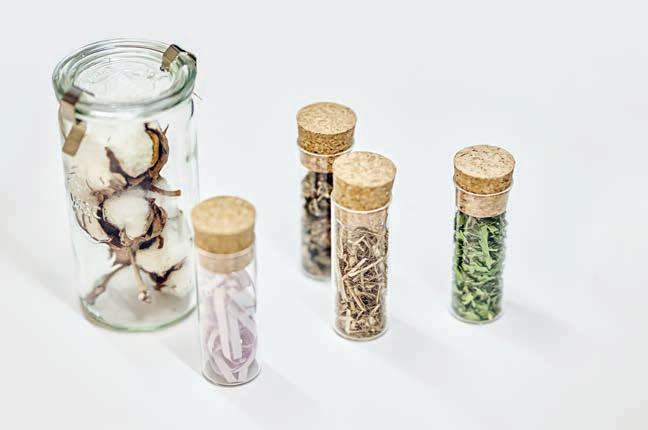

material for research
WHAT APPEARS TO BE MERE WASTE IS USED TO CREATE STYLISH PACKAGING AND PAPERS
whole production facility smells powerfully of chocolate because the paper itself contains inclusions of tiny scraps of cocoa husks, a waste product from chocolate manufacturing. Establishing the correct proportions of these ingredients in order to create good paper is a highly sophisticated art. In this case, the secret is recycled cellulose, its darker color underlining the chocolate element. These papers are created as collaborations with customers seeking a special paper with the twin aims of exploring every boundary of the possible, but also of teaming up to enhance sustainability. The customer’s task is not over once they place their order; they also need to ensure that sufficient quantities of the materials on which that paper is based –in this case, the cocoa husks –are delivered to Gmund Paper, the venerable paper mill at Lake Tegernsee. What appears to be mere waste is used to create stylish packaging and papers, a process that could hardly be more sustainable.
Coffee, chocolate, herbs, s pices and teas are currently creating a buzz, and Greenfibra Labs clothes them in paper. “I don’t see any end to it. It’s such a vast area,” says Kloth-Everding, pointing to plant- or flower-based cosmetics as ideal candidates for special product packaging. These papers spark an instantaneous response from nose, eyes and fingertips. They are emotion in its purest form; they communicate sensory values. The appreciation of material and design that goes into them is instantly palpable. The most attractive form of environmental protection.
Gmund can hardly be accused of limiting its customers’ choice. There are over 100,000 different paper variations in the standard product range alone, each with its own color, grammage and texture. One or two new collections are generally launched every year, all reflecting the philosophy of sustainability, with FSC certification and sustainable man -

ufacturing methods. Gmund’s Bio Cycle collection succeeded in replacing half of the wood cellulose fiber used with other natural materials including chlorophyll, straw and hemp. More and more of the company’s collections have cradle-to-cradle certification. And the effort of creating them is worthwhile, as customers increasingly ask for environmental certificates and labels and check whether the products they are considering are made in Germany. A mindset shift has begun. But sustainability is not a finite process. It will never come to an end; there are always tweaks, adjustments and opportunities for improvement, and Gmund Paper is no exception. The energy bought in by the company is 100 percent hydropower, supplementing its own solar panels and an ozone purification system. Gmund takes special care to ensure its waste water quality goes beyond the strict requirements of national law. “We use a lot of water,” admits Katrin Kloth-Everding. “But we try to reduce the particulate in our effluent to minimize pollution.” All new papers are created in a process of deliberation. Is this one really more environmentally compatible? Where can we source the fiber? What processing method will we need? What about energy consumption? And how recyclable is the paper or the material?
Basic research is all part of the job
The first evaluation takes around two weeks, examining production issues as well as seemingly insignificant details like drying and comminution processes. Customers ordering two tonnes or more can commission an individual paper type – an offer mainly taken up by companies, which can enhance their image with custom colors and tex -
tures. Greenfibra Labs receives one or two products a month for laboratory analysis. Current research topics include products from peat bog plant fibers such as reeds, which are particularly suitable for thicker paper like corrugated card and egg boxes.
Kloth-Everding performs basic research as she seeks to discover which substances can become paper, and how. She tests the properties of fibers and creates paper samples to get a feeling for what is possible. The chemist starts by taking a multisensory approach. “I hold the
material, look at it closely. How fine is the grain? Fine material will result in fine paper. Are there inclusions?” Her mind starts to race. “What can I combine it with? Which fibers can I use?” That increases the firmness. Once the visual and tactile characteristics are in place, she can embark on applied research into the fiber properties. The sample paper has to be discussed with the production department. Could it cause problems for the machinery? What form will the test production take? The level of commitment is infectious; Kloth-Everding’s children have begun to collect pencil ends and shavings, or bring in plants from the garden and ask, “Mom, can this be made into paper?” These are small steps in everyday terms. But a clear shift towards bringing more sustainability to our lives.

SEPTEMBER 19, 2024
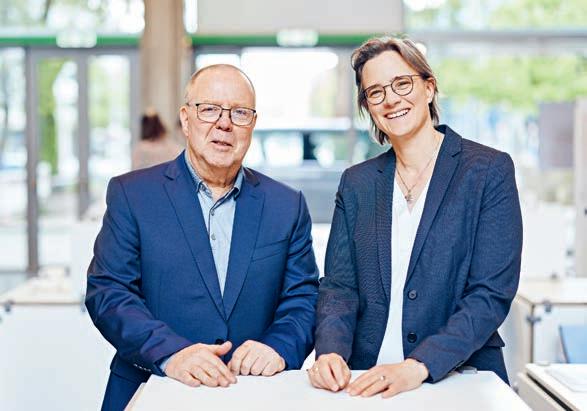
MANAGING DIRECTOR
IUD INSTITUT FÜR UNIVERSAL DESIGN
FOUNDER
IUD INSTITUT FÜR UNIVERSAL DESIGN
So what actually is universal design, and what direction is it currently taking?
We define universal design as responsible design aimed at advancing diversity in society and fostering accessibility, self-determination and social participation by doing so. Universal design thus has a high level of social relevance.
The German nonprofit organization Universal Design Forum e.V. focuses on human difference. We are convinced that our society’s strength lies in people’s individuality and diversity. Given this, universal design can – and must – be applied throughout all parts of life. Current areas of focus are certainly education and the design of universal workplaces to counteract the skills shortage.
Does universal design have any points of intersection with sustainability?
Universal design takes in both social and ecological sustainability. Products, services and environments that embody universal design ensure that social justice is implemented. Its ecological aspects include longer and more efficient use of, say, buildings that cater to the needs of diverse users.
Does universal design use examples from nature as inspiration?
Design that applies the criteria of universal design is often based on nature. Take the hook-and-loop fastenings like the Velcro ® brand, for example, which are based on the sticky hooks found on the leaves of certain plants. Those inventions enable people with limited mobility to dress and undress independently. Circadian lighting is another example. Based on the body’s own sleep / w ake rhythms, when used in healthcare settings it has been proven to encourage more refreshing sleep for patients and staff and to increase daytime social interaction.
FOUNDER AND MANAGING DIRECTOR
PRETTYGOODIDEAS
Will the future see us moving toward more development in collaboration with nature?
That would certainly be a good thing! Spending time in natural environments has become increasingly popular in recent times, as a trend that reflects our desire for connection, self-reflection and authenticity. In the future we will seek out this connection more intensively, particularly in less urbanized places. This development unlocks opportunities for the world of work by tapping into areas of potential for wellbeing and productivity.
Have you already undertaken projects in collaboration with nature?
As part of the Flower Power Festival in Munich, we explored the influence of flowers in the digital world. According to the studies, tests and expert interviews we conducted, flower-related content is perceived significantly more positively and supports orientation and learning. This highlights the influence of nature on the digital world and opens up new ways of incorporating natural elements into digital media.
What kind of challenge arises when we work with nature to develop or change projects / processes?
The challenge presented by projects involving nature is to maintain a playful, light touch and view nature as an integral partner in a co-creation process. This enables us to work with nature, not against it, and opens up creative pathways in our shared activities – including giving back to nature in order to build a genuine, serious co-working relationship.



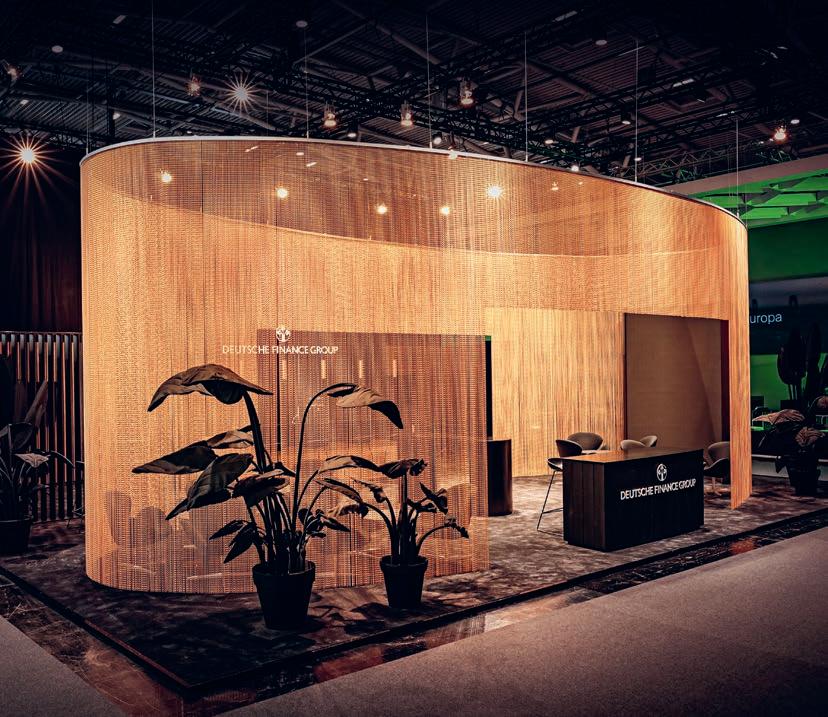
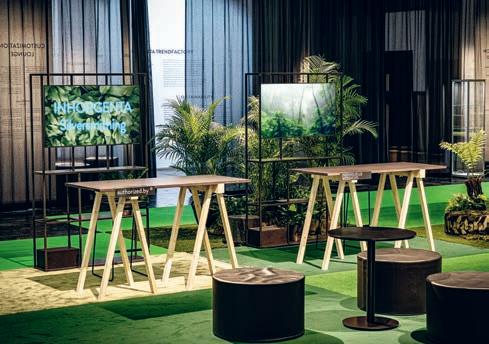
“Trade show architecture” has a ring of fast fashion about it. Fast and showy,but guaranteed to be anything but sustainable. ARNO Design takes a different approach without compromising on style and impact. “We’ve always avoided ‘throwaway’ trade shows,” says Mirka Nassiri, CEO Strategic Project Development. “I was brought up to save energy and treat things with care.” The ARNO Expo Development division is a byword for modular exhibition concepts, high-quality materials and instantly customizable digital solutions.
CEO and Creative Director Claus Neuleib agrees that “fast fashion” is a pretty good comparison. “We have a background in premium trade show design and spent a long time working
for the fashion industry, which pushed us to our limits with its high-end design needs. Everything had to be perfect, smoothly organized and flawlessly communicated.” 15 years ago, the company launched ARNO Expo Development as its second pillar: “Alongside classic trade show construction, our strength is prebuilt architecture.” For many exhibitors, this has meant an unaccustomed move away from the usual sawing and drilling that goes on in conventional trade show setups. Now, whole booths are simply dismantled for storage after the event. “People at the trade show can’t believe how fast the handover is completed. They ask ‘But where are all the trucks?’” At ARNO Design, precisely zero time is spent carting MDF panels across the country
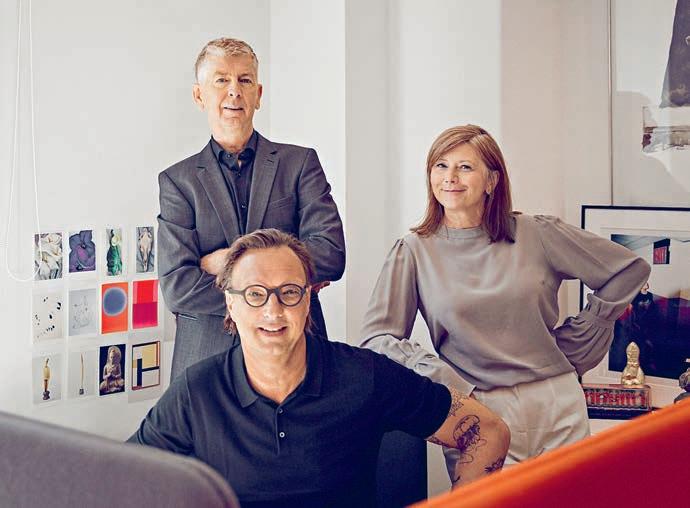
from Berlin to Munich or from Nuremberg to Duesseldorf. Instead, the 23-strong team works with local materials and partners. “We try to avoid elements such as plastic sheets or banners, and print everything on sustainable paper. It’s become standard procedure, and we’ve never made a big fuss about it.”
The modular system can be customized almost infinitely with add-ons, graphics and logos. Individual requests are all in a day’s work. Every modification is linked to the prebuilt system in the database. The process saves time – particularly for the exhibitors themselves, who would otherwise have to arrange for staff to set up the stand. Nassiri points out, “We take care of all that for them, so our partners are happy to keep coming back.”
The figures are certainly in favor of modular trade show booths. Exhibition promoters and exhibitors can slash their outgoings by
DESIGN IS ALWAYS A PRETTY PERSONAL STORY AND EVERY ORDER IS LIKE A RELATIONSHIP
around half, but still be confident of high quality. ARNO Design does not need vast workshops and minimizes its material consumption, backed up by digital planning and communication, as Mirka Nassiri explains: “We win over exhibitors because we can immediately deliver transparent results after meetings with up to 80 people.”
ARNO Design can look back on 30 years of history. The company designs full-scale trade show concepts that create the perfect atmosphere for organizers and exhibitors. “It’s exciting because the experience depends so strongly on the whole package. From layout concepts down to catering and chill-out zones such as an Oriental bar, a Venetian-style restaurant or a ‘Buddha Bar,’ a trade show is transformed into an unforgettable experience. The overall impression made by the hall is critical.”
Exhibition design is a form of catalyst. it’s always about emotions, that indefinable je ne sais quoi in the air that turns an encounter into something special.
Exhibitions that fail to spark that emotional connection have problems. So what’s the key to success for an exhibition booth with emotional impact? “Design is always a pretty personal story, and every order is like a relationship,” says Peter Haberlander. “It never follows a standard path, but revolves around unique features and that special touch that we coax into being. It takes an understanding of the company, and it takes courage. We have the courage to be very proactive and persistent.” His colleague Claus Neuleib goes a step further, declaring that a good exhibition display should be polarizing, should stand out from its surroundings, “grab attention.” This means eschewing “flabby compromises” in favor of a “design dictatorship.”
But Neuleib also affirms that art is about creating convincing design at a feasible budget. A goal that ARNO Design’s wide-ranging areas of expertise and individual characters help to achieve. But there are limits, too. “No, we have no desire to do absolutely everything,” says Haberlander firmly. “That’s the good thing about being a veteran in our field. Sure, start-ups have their own charm, but we have the experience, and our team is a great mix of young and old. This enables us to turn down requests occasionally. And once the exhibition is over, everyone’s happy they took the risk.” For this reason, ARNO Design prefers working with long-standing partners: “The longer we’ve known and worked with our clients, the more trust they place in us. They give us free rein in the choice of materials and the design.”
But how to demonstrate sustainability? “We don’t chop up
MDF boards for recycling; we use existing modules,” replies Mirka Nassiri. “Sustainability is simply far too complex an issue. It’s about more than material qualities, mileages and local assembly services.” To prove this, the Munich company is currently working toward certification, not least because more and more exhibitors are keen to show they are on the right side. No exhibitor wants to be smeared as “cheap and disposable.” With the support of ÖKOPROFIT (ÖKOlogisches PROjekt Für Integrierte UmweltTechnik) a collaborative ecological project by the City of Munich, ARNO turns the spotlight on every step of its operations. Haberlander points out that sustainability needs experts – but sustainability is also a matter of the right mindset and the right fine-tuning. Sabrina Brückner, Head of Marketing & Communications, opens a huge checklist covering every aspect from selection of materials, energy efficiency and use of local suppliers and manufacturers to reduce transport costs down to reusable modules (“Our booths are specifically designed to be easily dismantled and reusable”), waste management, digital solutions and social responsibility: “We ensure ethical working methods are in place.”
ARNO Design now operates in four different worlds: the trade show booths and displays themselves; the “choreography” of the exhibition space; outdoor areas; and the virtual space. “When we plan projects, we automatically create a digital version alongside them. All our stands are in 3D,” says Nassiri. And yet she remains skeptical of online-only events, noting that a standard one-size-fits-all package for everyone simply doesn’t work. And then she laughs, “Anyway, digital wine doesn’t taste of anything much! It’s always about personal interaction.”
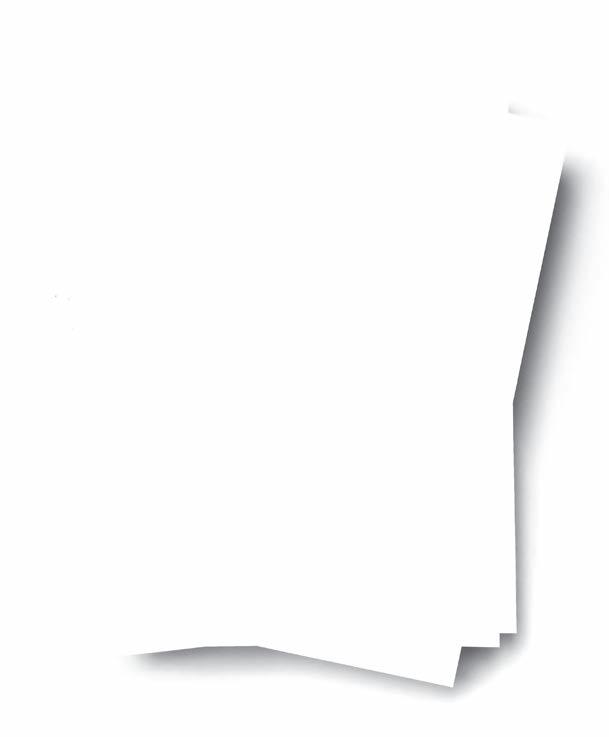
Erhalten Sie 10 Ausgaben DETAIL und sichern Sie sich eine der folgenden Prämien gratis. Receive 10 issues of DETAIL and get one of these gifts for free.
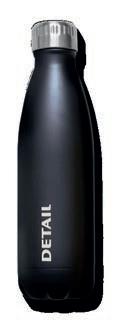
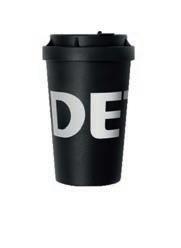


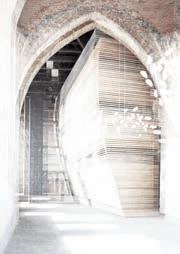

CEO LATENT
Do we need to redefine “nature”?
Yes, we do. We’re at a turning-point where we need a new definition, not only of “nature,” but also of concepts like “humanity” and “intelligence.” The question of nature keeps re-emerging in many different areas. However, the issue is not so much the definition per se, but the ongoing engagement with aspects of nature. In a world of (un-)limited opportunities, it is essential to constantly re-evaluate and redefine our relationship with everything.
What do we need to change in order to work with nature?
To work with nature, we need to learn how to set or accept limits for ourselves. Take the development and design of the restaurant “etz” with Felix Schneider, for example. Here, the constraints set by self-imposed rules –sustainable, regional, seasonable – were the anchor. Limitation compels any team, from design studio to kitchen, to interact more intensely with nature and better understand its rhythms and resources. It’s a process of rethinking. Limitation opens up new perspectives.
And what characterizes the challenge of working with nature on development?
The challenge is to truly embrace the limitation instead of trying to sidestep it somehow. Limitation fundamentally changes our perspective and opens the door for new ideas. In a world where lack of limits so often results in uniformity and conformity, conscious limitation can be a source of innovation. This approach is particularly vital in the age of AI because it helps us to preserve uniqueness and escape interchangeability.
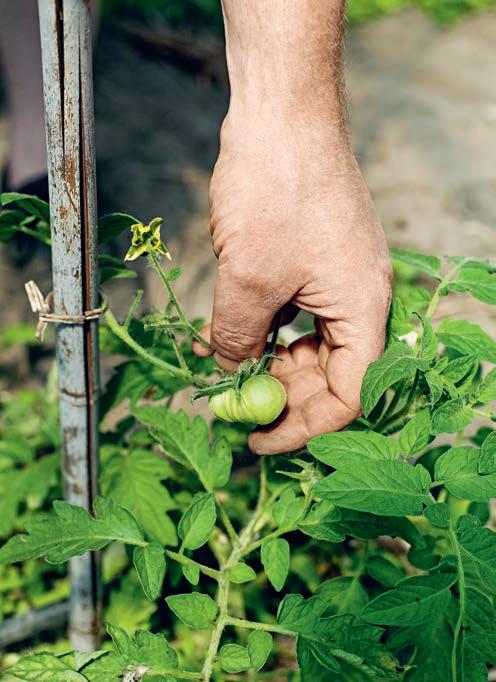
Design solutions that interweave nature and technology
Will online become second nature to us?
What is real? Once upon a time, bus passengers immersed in a book could easily miss their stop and struggle to return to the real world. Today we swipe through more pictures in a day than our grandparents snapped in a year. We are multitasking-enabled to the point of impact denial. Instant switching between smartphone videos, tweets and reels is all part of life. It’s almost become a test of courage to try and pull the rug out from under media pros like us. Literally. In “Richie’s Plank Experience,” users can ride the elevator to the top of a virtual skyscraper and “walk the plank” over the yawning drop to the street below. Despite the pixelation in the VR headset, the scene feels so damn real. Disturbingly so. All that’s missing is the wind in our faces.
In the age of data, technology itself takes on nature-like characteristics. It is complex and ubiquitous. It surrounds us from the time we get up to the time we go to bed. It creeps up on us, physically and mentally. With the help of virtual reality, the metaverse and AI, we can step into completely new dimensions of “near-natural” experiences. Today’s art scene has long since begun to address this merging of technology and nature in total immersion. And no wonder.
How does it feel to create worlds in which users can move around freely, including artificial nature? Tamiko Thiel, winner of the 2018 iX Visionary Pioneer Award for her life’s work as a digital artist, has a soft spot for depictions of nature. Her work takes place at the threshold of augmented reality, the point where total immersion suddenly kicks in. Thiel’s first
piece in this field was the 2012 interactive installation “Transformation Lehel,” which revisualized Munich’s network of urban rivers, now banished to the underground sewers, and strewed virtual windmills and water wheels in its smartphone app. In last year’s “Flowers Forever” exhibition at Kunsthalle München, Thiel and her artist colleague "/p" invited visitors on a journey into the future through the twigs and branches of a type of forest that could soon be found throughout Bavaria. The app showed Norway spruces with conical blossoms emitting clouds of pollen, an – admittedly highly esthetic – stress response by the trees that is “probably a form of survival instinct as the trees attempt to survive the dryer, hotter environment we have created.” The attractive flower show quickly morphed into “an immersive encounter with how climate change is affecting the Bavarian forests.” Visitors were drawn deeper into the blooming dystopia with every motion of their phones. These new forests are full
of chequers trees (or wild service trees) attracting clouds of iridescent green rose chafers. This denizen of the “climate forest” of the future supplies Europe’s most valuable hardwood, and its fruits create a habitat for insects, birds and small mammals. Tamiko Thiel unlocked insights into a blooming digital world in which ultra-artificiality suddenly felt right and coherent, almost normal.
Nature-like design naturally has a catch. Where does the energy that powers the installation come from? What impacts will the simulation of an (undesired) future have? And paradoxically, could the project, created to educate and inform, perhaps even encourage this future? The debate over the energy hunger of cryptocurrencies and NFTs is far from laid to rest. According to the Electricity Consumption Index of Cambridge Center for Alternative Finance, Bitcoin alone accounts for 94 terawatt hours p.a. and Ethereum up to 80 terawatt hours p.a. The Internet was responsible for 4.6 percent of global energy consumption in 2012. Since that time, its energy hunger has grown ever more unstillable; in 2020, 16 billion kilowatt hours were devoured by German computer centers alone.
A YouTube video by GYOC (Grow Your Own Cloud) warns that we are heading for an age of “data warming.” We need to take action. Instead of storing data in energy-ravenous server farms, it will be encoded in the DNA of carbon-captur-
ing plants. In the installation, the plant genome is decoded “in real time using state-of-the-art genetic sequencing technologies and displayed in space to reveal hidden messages.” Fiction? GYOC presents its Data Garden as an extension of nature, a truly green data storage solution and “an accessible public resource that is shareable within communities.”
The hybrid Spain EXPO Pavilion Dubai gave a glimpse of what a future of this kind could look like, presenting a blend of high-tech, ancient knowledge and sustainable material concepts. The conical buildings constructed from recycled wood and steel utilized the “chimney effect” as a traditional cooling method. By contrast, the underground high-tech exhibition area was packed with “breathing materials” creating an interactive display. Trees were 3D-printed from corn dextrose and “PURE.TECH,” designed to capture airborne pollutants, while oxygen was supplied by microalgae in photobioreactors. The pavilion was designed as a joint project by architects Amann-Canovas-Maruri and the offices External Reference and Onionlab. It aimed to create an “immersive experience,” participatory and educational, playful and informative.
We are in a paradoxical situation. While we spend longer and longer in front of screens, setting up a second digital world for ourselves and settling in comfortably, we are actually building a habitat in competition with the ecosphere. The skill will be to enable both these worlds to coexist. As it seems, design already holds the key.
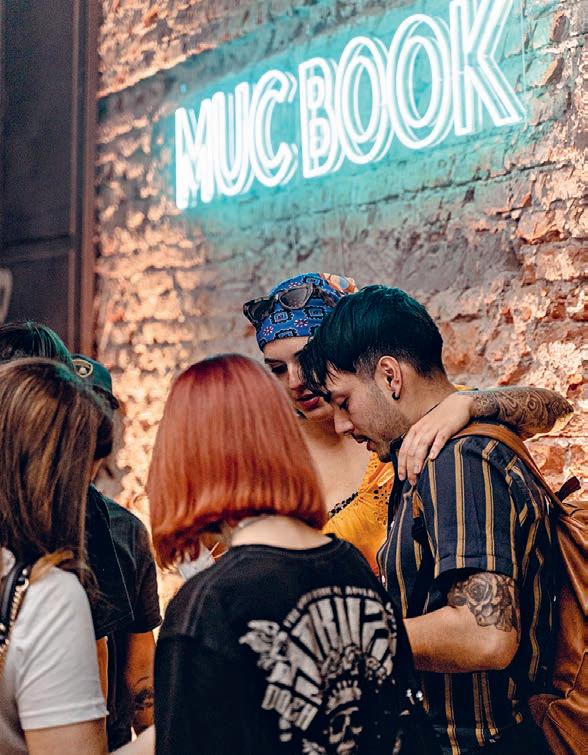

Marco Eisenack, owner of Munich Innovation Crew agency, publisher of MUCBOOK and founder of MUCBOOK CLUBHAUS, explains how properties can be revitalized and become launchpads for creative minds.


OLIVER HERWIG
Why are you part of the mcbw?
MARCO EISENACK
I firmly believe in mcbw’s philosophy of bringing together creative economy, business, creative minds and companies. Munich is a great location with a strong higher education landscape, home to global companies and a vibrant creative economy. Our aim is to encourage these worlds to intermesh more closely, because in Munich people still tend to stay in their own bubbles.
OH
The new MUCBOOK CLUBHAUS in Giesing, destined as an ecosystem for creative professionals, provides that encouragement.
ME
Exactly! We provide fertile ground for innovation all year round. It has to be able to grow. It takes an incredibly long time for people to build up trust and get moving so that genuine dialogue and collaborative new ideas can evolve. But it’s been that way in all our organizations. It takes a year before the first ideas for collaboration come to fruition.
OH
What form can that collaboration take?
ME
At our KICKOFF in Munich’s Westend district, a 3D printing expert teamed up with an artist and they designed a lamp together. Collaboration needs a common space, but it also needs time. I’d imagined it would be a
far simpler and faster process. It’s so obvious we’re part of nature, where such a major role is played by human interaction. Because of this, the great vision we have with our clubhouses is to create a permanent ecosystem.
OH
The MUCBOOK CLUBHAUS in Westend isn’t the first, is it?
ME
No, that’s right. We’ve just opened our 23rd temporary-use project –since 2019. The idea came about from MUCBOOK, our city listings magazine. We wanted to transform the positive stories about pioneers and their ideas into three-dimensional experiences, which then became spaces for creative working, inspiring dialogue and cultural interventions. Our locations change, but the MUCBOOK universe is the constant. And it’s expanding.
OH
Are the clubhouses something like acupuncture needles in the spatial context of the city? Placed where something needs to change?
ME
That’s a nice image, because we’re naturally microscopic compared to the city. But as we know, the flutter of a butterfly wing can set great events in motion. By providing impetus and inspiration, we aim to bring intriguing, stimulating people together and spark good ideas that make the city a better place. And that’s our motto: “We make Munich a better place for good people.”
OH
What motivates people to carry on going into the office in this day and age?
ME
Meeting other people, obviously. We strive to foster community by bringing together people with similar values and goals.
OH
What do creative minds need in this ecosystem?
ME
Creative processes are o ften haunts of self-doubt and selfcriticism. They need someone to bounce ideas off. The Clubhaus is a great opportunity to
look over people’s shoulders, and sometimes get a helping hand. We’re a cozy nest, but also a rocket launching pad. A protected space where people can grow their strength, but also a place where they can step into the public spotlight and take off. You could say we go from startup to scale-up.
OH
So the right framework is the main priority?
ME
Exactly. The problem in Munich is that a lot of office space is set up for large-scale companies. Very few property owners have shown any inclination to bring in smaller tenants like start-ups, which don’t want to sign a contract committing them to a tenyear lease.
OH
So what’s the solution?

As an anchor tenant, MUCBOOK CLUBHAUS provides a stimulating space and curates a blend of creative professionals, startups and established companies that inspire each other and use the space in parallel. More efficient use of space provides vital leverage for us to keep rents affordable.
OH
Has the situation eased in the wake of COVID-19 and the growth of working from home?
ME
Rents for prime locations on the classic office space market are not going to fall, purely because the quality of those spaces is constantly rising. But office blocks in B locations are finding it increasingly difficult to attract large-scale tenants. This is where MUCBOOK CLUBHAUS can step up in the role of placemaker and transform a vacant property into a creative hub which then generates its own intrinsic attraction and offers more than just office space.
OH
So a combination of cafe …
ME
... and workshop space, maybe hosting talks in the evenings and a pop-up store by a local label. A space for surprises and inspiration. That’s the kind of co-creation we’re currently establishing in CANDY in Munich’s Giesing district. A yoga studio in the mornings, coworking during the day, club events in the evenings, and exhibitions and debates on weekends. A kind of cutting-edge take on a local meeting space. To achieve that, buildings need to be far more flexible and allow for mixed use instead of assigning the various types of use to separate little boxes. This is where we’re confronted by the realities of the Building Code.
OH
Real estate is still designed in a very one-sided way.
ME
That will change. In the future, buildings will be brought to life, curated and occupied in com -
pletely different ways. Even office properties will no longer be lifeless blocks, but attractive places. Employees want a space where things happen that are completely unconnected to work. These “third places” are located on the ground floor and used in parallel with the other types of use.
OH
What does planning law have to say about that?
ME
Everyone – first and foremost the property owners, of course –wants cast-iron planning certainty. On the other hand, there are about 3500 industrial standards to consider. And amazingly, more are added every year. Basically, what we need is more courage. No growth without courage. And it doesn’t need to be in the classic sense of “farther, higher, faster.” I’m thinking of growth that’s made up of networks and symbiotic relationships.
OH
Isn’t Munich a pretty bad place for experiments?
ME
No, quite the opposite – Munich is an ideal place for new ventures! The mindset is perfect and there are plenty of hands-on makers. Munich’s beer garden culture is a symbol of how widely differing groups can come together and have a good time. That can also apply to other topics, too – to the transformation of cities, business models, and everything that requires people to step outside their boxes. That’s where Munich is less prejudiced than Berlin or Hamburg, which are cities built in a far more confrontational way. The spirit of “live and let live” is alive and well in Munich, and that’s what I like most about the city.

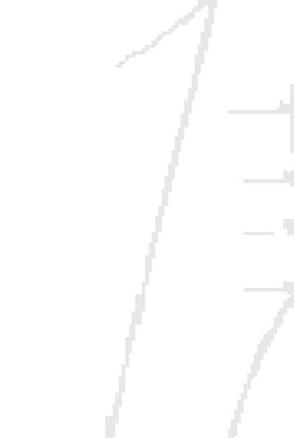

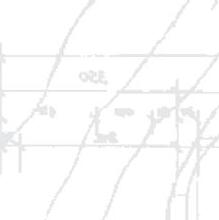
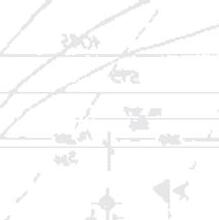
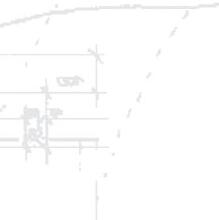












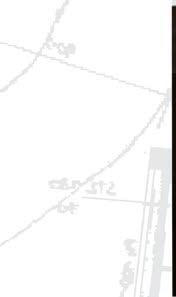



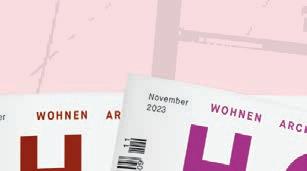
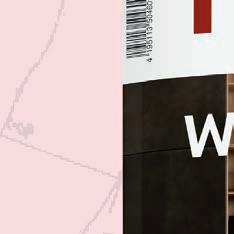

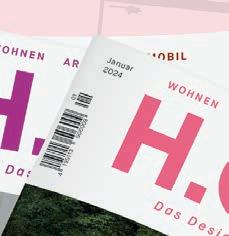









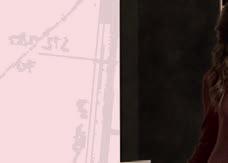
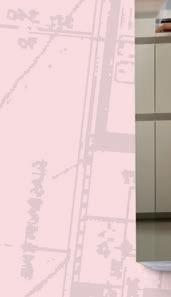








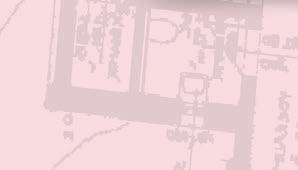


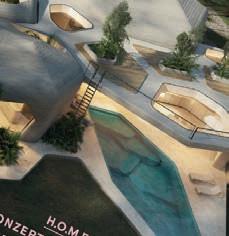





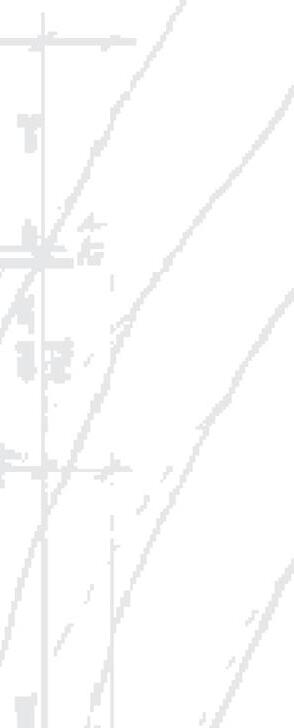











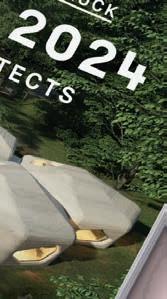











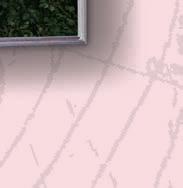









HOST OF DDX DIGITAL INNOVATION & UX CONFERENCE
How close will technology get to us – physically and mentally?
Technology is advancing to become more integrated with us, both physically and mentally, enhancing what we can do. The key is designing this enhancement with humans firmly in control. Transparency and trust are crucial, highlighting the growing importance of the designer’s role. Designers have to advocate for the human factors in this process. Shaping technology to be human-centered has never been more important, both physically and mentally.
How can we remain human in a virtual future?
In a virtual future, it’s vital to stay true to our human side. Designing technology with people in mind is crucial. Technology has always been a tool for humans, even in our digital age, so ensuring it stays that way is key. When it comes to virtual technologies and topics like AI designers also play a key role in shaping the regulations in a way where humans get protected and shape innovation in the right direction.
Which innovations should we prepare for today?
To stay ahead in innovation, we should focus on gearing up for augmented innovation & creativity. This means getting ready for technologies that boost and enhance our creative abilities. Preparing for advancements in AI, collaborative tools and new creative platforms ensures staying ahead in the rapidly evolving landscape of innovation. Innovation is becoming “generative” and designers are more and more designing their artifacts, digital and physical in an “indirect” way. This shift also increases the value of methods and processes that take opposite approaches.
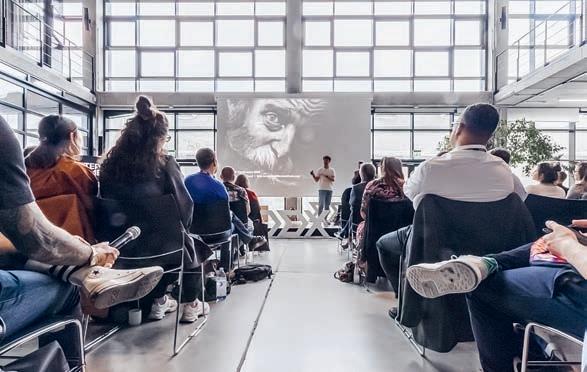

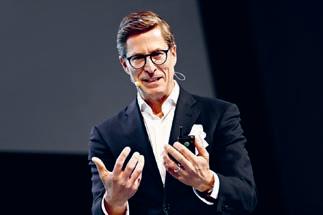

When it comes to the crunch, creativity in business life does not always carry positive connotations. Take creative accounting, for example, which may even result in a jail sentence. But there are different – radically different – ways of being creative. Deloitte’s digital arm views creativity as a tool, and design as a medium that builds connections and releases energy. “When I joined the company over nine years ago, creative minds and designers were always regarded as ‘the crazies’,” recalls Andreas Harting, Deloitte Digital partner and Managing Director, in explanation of how management consulting has changed since those times. Teams are now mixed and diverse, and groups are ideally made up of different, but complementary skills and characters. Including design, of course.” From user experience to product design, every step engages people as a team, collaborating to develop solutions.” Solutions for what? “We start by building value-adding solutions for our clients’ clients, services, and whole platforms with ecosystems,” explains Harting. Those platforms include education and training that can be democratized by the use of digital methods, such as immersive history teaching or language learning with same-age peers in other countries.
synergy than ever before
Deloitte Digital believes that inclusive access to the services of official authorities and offices is vital. The company created an information portal for the German state of North Rhine Westphalia with low-threshold access for people that need support in dealing with applications, certificates and forms. User experience designers started by interviewing potential platform
users and identifying their needs. This information served as the starting-point for creating an inclusive, accessible digital platform in German and other languages.
For Deloitte, the venture of bringing together numbers and images, two disciplines that could hardly be more disparate, has clearly paid off. The interface be -
tween material world, the world of ideas and the digital world is where business, technology and people meet. And suddenly things that usually jar with each other come together: the world of besuited consultants blends with the sneakers-and-sweatshirts world of the creatives. As Harting recalls, “We brought in teams and developed themes slowly and gradually, aiming for cultural assimilation.” This collaborative culture is also valued by Neil Edion, Senior Manager & Market Offering Lead/Customer Experience & Applied Design. Both sides experience the mutual benefits when classic consulting services, in-depth familiarity with the industry and creativity work together to produce the best result for their clients.
Growth is naturally at the heart. Deloitte is growing by leaps and bounds. From sales of around 32 billion euros nine years ago, the accounting and consulting
giant recently reported around 65 billion euros in sales generated by over 400,000 employees worldwide. “But we also notch up many thousands of pro bono hours in social services around the world and are always on the lookout for ways to give back to society,” points out Harting. And Neil Edion adds, “What’s given it the right twist is that we constantly seek ways of making things more sustainable or redesigning them.” For clients, that may mean building transparency into supply chains. “But at the same time, we need to set up circular business models and boost efficiency.” Harting pauses for a moment. “I’m in two minds about this. Virtual operations are efficient, but consume incredible amounts of computing power that will increase exponentially. On the face of it, that rise in resource consumption has little to


do with sustainability. So we need to keep asking ourselves: does this really benefit people?” Edion believes there are opportunities here. “Digital transformation has no beginning or end; it involves a new ability to continuously innovate. We need to constantly adapt and adjust things to make life more sustainable again.” Deloitte’s digital unit has a clear-cut mission: “To fulfill people’s basic needs in the context of work, in interaction with brands, services and products.” But instead of asking how the world can become more digital, the teams are asking, “How can we use digital tools and digital topics to make the world better for the people living in it?” The goal is to create something natural and self-evident, not to celebrate technology as an end in itself.
Change is everywhere. But few people welcome it with open arms. A fact that Deloitte Digital is well aware of: “If we do our job well, we help our clients to overcome this obstacle, develop the will to change and cope with the pain of change.” Transparency is helpful, as is the ability to make complex things easy to understand – because complexity is not going to go away. In a word: design. Deloitte Germany now employs 12,500 people from 104 countries. Almost 30 of them make up the customer experience team. A pretty diverse
bunch, with one idea that binds them: the desire to “discover the world anew and to help shape it. This means no two days are alike for us,” says Neil Edion, whose team is engaged in constantly building bridges between technology, creativity and business
OF COURSE WE CONSUME RESOURCES – BUT WE ALSO AIM TO GIVE SOMETHING BACK
strategy. The mcbw’s annual motto – “How to co-create with nature” – is a perfect fit for him. “The idea of sustainability falls rather short for me,” quips Edion, “because nature is everything around us. And to be honest, I think that’s also our business mindset. We look at what helps people and the world we live in. Ideally, that’s complementary, not contrary.” The big topics of education, participation and equality of opportunity are therefore all killers, no fillers. “Those are the projects that make our employees really happy,” says Harting. “They’re hotly sought after; absolutely everyone wants to do them.” The goal is to develop holistic solutions. “Our aim is to bring together business, nature and people. Of course we consume resources. But we aim to carry on, together with nature, to give something back. Nature gets something from us, and we get something from nature.”

CREATIVE DIRECTOR & PARTNER
SCHMIDHUBER BRAND EXPERIENCE
How close will technology come to us – physically and mentally?
Technological developments are created by and for people. Given this, it is only logical that technology will come closer to us. Be it digitalization, AI, robotics or orthopedics, technology is shaped by human need, and humans are in turn shaped by technological possibilities. This is clearly demonstrated in the field of orthopedics. We want prostheses that feel intuitive, like a part of the body; the more human the better. At the same time, sustainability focuses on developing technologies that place our environment front and center. We need to develop and encourage this type of altruism.
What can we learn from modern digital art?
We can learn about this art’s direct access to new technologies in order to explore new forms of expression in semantics, symbolism or critical observation. Art transcends borders and boundaries, brings together the seemingly disparate or invents something wholly new. Abandoning conventional ways of thinking is as much an inspiration for us as the new horizons, the profundity and sensuousness of the artworks. Learning from art means never standing still, but always moving onwards, critically appraising, breaking with the status quo, delivering surprises and, ultimately, utilizing technologies for purposes for which they were never intended.
What innovations should we expect in the future?
AI has recently upended the market as a milestone that has certainly paved the way for many innovations. Quantum computing speeds up calculations, while personalized medicine and genome editing are transforming the healthcare industry. Renewable energies and sustainable technologies point the way into a more environmentally friendly age. Artificial and virtual reality promise new directions in entertainment and education. The list of innovations is a long one, so it is all the more vital to draw up a policy framework that steers these innovations on the right course.
TEAM

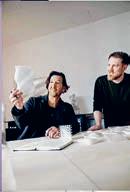


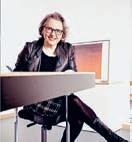
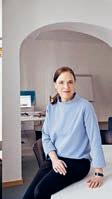
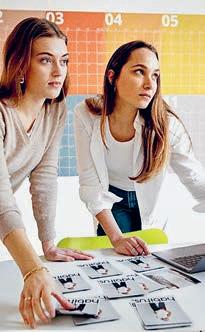

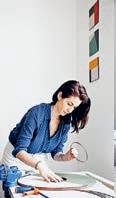


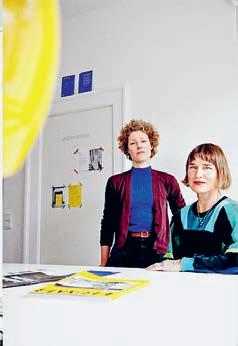

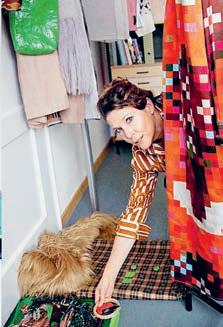
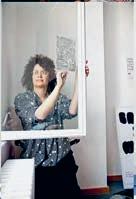

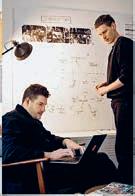

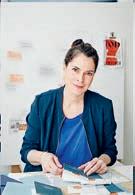

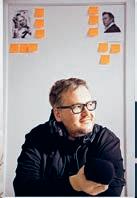

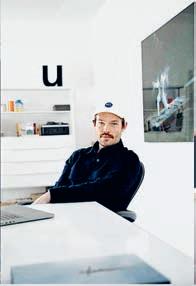
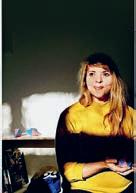
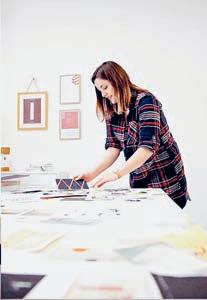
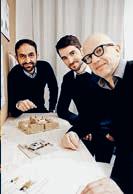
Dr. Olaf Kranz on the role of cultural and creative industries amid societal transformation.
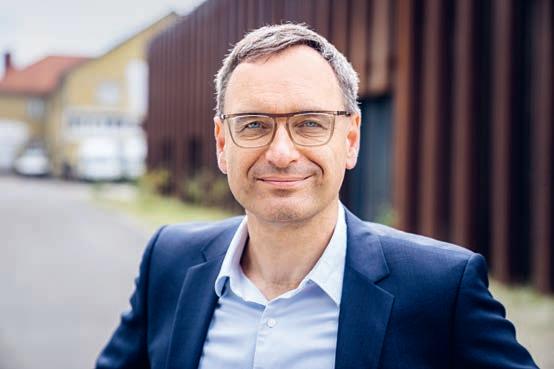
OLIVER HERWIG
What is the current status quo of Munich’s cultural and creative industries in early 2024?
DR. OLAF KRANZ
A recession means that the economic situation is far from rosy. But as always and everywhere, there are winners and losers. Well-established large-scale companies are continuing to do well, but small companies and newcomers are facing particularly tough conditions. As a general principle, in the cultural and creative industries every new esthetic form has the chance of success at any time because our society is so preoccupied with the esthetic surprise. You could almost say it’s the inherent basis of our business. While that’s no different in a recession, in this case something like Maslow’s hierarchy of needs kicks in; cultural assets are the first targets of spending cuts during times of crisis.
OH
So consumer restraint is particularly noticeable in the cultural and creative industries?
OK
Well, on the other hand I notice that theaters appear to be showing signs of revival and cinemas have already recovered. People finally seem to be returning to high-quality communal cultural experiences. Streaming simply doesn’t cut it. That makes me hopeful that our industries will likewise be able to rise from the crisis.
OH
What impact is digitalization having on a field that had previously been confident of escaping its consequences?
OK
Well, that’s the 64-thousand-dollar question: what is creativity? Who is the author, and what does it mean when an AI text generator is prompted to disgorge cre -
ative works that have previously only ever been credited to human beings? We’re currently in the midst of enormous upheaval. The question is how the cultural and creative industries, and the individual companies working within and with those industries, will position themselves, seize opportunities and make the most of niches.
OH
So, it should be a great time for artists, cultural thinkers and creative minds to address this upheaval in their work?
OK
Yes, absolutely. Of course it’s a great time, but there are challenges too. Our industries have the incredibly important function of bringing innovation to innovation systems. My hope is that we can approach these societal challenges with greater creativity, and use new methods to devise solutions that have never existed before.
OH
You’ve been the director of the Team of Excellence for the Cultural and Creative Industries, City of Munich, since August 2022. What has happened since then?
OK
Time is flying. Alongside new content-related focal points that I’m introducing, the team has grown from 6 to 14 people. We’ve relocated, set up new premises and launched a host of new projects. In addition, politicians are increasingly coming to understand that the cultural and creative industries play a strategic role in tackling the social challenges ahead through their involvement in the digital and green transformation that is sweeping everyone along. We aim to provide support on the level of urban society, as our industries step up to fulfill this role.
OH Are cultural professionals driving transformation?
OK
The European Commission has pinpointed the strategic function of the cultural sector as a home for many new developments which are emerging with and within it. Think of the way we work today, in coworking spaces or open working environments; well, creative companies were the first to do that. The way we innovate today was invented in artistic and design practices, and has spread from there. Ideas like “design thinking” are transporting the concept into other areas, where it enables the growth of broader creativity and more agile development.
OH
The core of value creation in the cultural and creative industries is …
OK
... not technical, but esthetic innovation, which generates amazement, confusion and contemplation, sparks surprise, entertainment and emotion, and arouses different states of mind. This form of innovation is always based on differing forms of interaction with a specific medium of expression. Games designers, for instance, express themselves in digital media, where they incorporate esthetic innovations into design and storytelling. Poets, on the other hand, express themselves through the medium of language, while designers use the various materials and fabrics of their chosen medium of expression. People constantly strive to employ esthetic innovation to shake the world up –while allowing them to earn a reasonable living. As numerous research studies have shown, more of those design mindsets need to be placed in leadership positions because they have
characteristics that we need in the new entrepreneurial environment.
OH
What are those characteristics?
OK
We need to hone our skills in dealing with uncertainty, coping with ambivalence and ambiguity, and enduring conflict. These are characteristics that were acquired from artistic and creative dialogue with esthetic media, and which are now ideally suited for proving themselves in the new environments.
OH
You mentioned networks connecting various different fields. But they can also come about by creating spaces.
OK
From the outset, my team prioritized the task of supporting cultural and creative professionals in their search for long-term affordable spaces for working and presentation, and short-term spaces for more experimental activities. It’s important because Munich is an incredibly expensive city where space is at a premium and competition for it is fierce. There is a vast need for creative spaces in central locations. People want to work in urban environments that encourage creativity and provide inspiration – but those are precisely the locations where rents are so high as to be unaffordable. Here, we are trying to raise their visibility and generate an understanding of their ways of working and their importance. At present, this is happening in our incubator, set up specifically for the needs of the cultural and creative industries: the Ruffinihaus Creative Hub at the heart of the city center.
OH
With that in mind, you are taking action to create smart forms of temporary use?
OK
Exactly. We’ve already amassed a wealth of expertise on the subject and achieved good results. Temporary use can start with, say, a pop-up concert for a weekend event plus festival, but also extends to longer-term solutions. We only started in November 2023, with a pop-up concert in a storefront in Ruffinihaus, and it’s going incredibly well. In fact, we’re now solidly booked up through 2024. We also had a string of new initiatives last year,
where we’ve been working with the private property market to set up temporary-use projects in the city center and in district social centers. It’s pretty hard work and we can’t take success for granted. As a new line of activity that is set to grow in importance, we’re now stepping up our work on tools for organizing long-term affordable spaces for the cultural and creative scene.
OH
Is René Benko’s bankruptcy freeing up new spaces?
OK
Definitely. As we now see, many large-scale buildings from the second wave of modernism that were planned and constructed as monofunctional are turning out to have no function at all. Until solutions can be found for those buildings, temporary forms of use are definitely a possibility.
OH
How important is the New European Bauhaus pilot project “Creating NEBourhoods together” in Munich’s Neuperlach district?
OK
Very important indeed. We played a role in making sure the project came to Munich. The overall project for revitalizing what was once Germany’s largest urban expansion zone is based on the idea of involving not only science, business and administration in its development, but also civil society. The original Bauhaus always engaged in tackling social challenges alongside creating a new language of design. We need to reflect on that tradition and address today’s challenges of digitalization and green transformation in a socially inclusive society, first and foremost by activating and involving the potential for innovation that is part of the cultural and creative industries.
OH
Neuperlach is the home of “realworld” laboratories for urban development ...
OK
... in which the four stakeholders of innovation processes – business, administration, science and civil society – come together. And they do so using collaborative methods derived from the cultural and creative industries. In addition, we curate a pool of 30 creative professionals who all contribute their own specific artistic or design perspectives. The aim there is to reach greater heights of creative innovation that are also socially inclusive and are recognized and accepted as legitimate by civil society, enabling those innovations to be adopted and implemented with long-term effect.
OH
Are the cultural and creative industries actually perceived as being on an equal footing?
OK
The cultural and creative industries always span various camps: there are many small-scale companies and freelancers, but also large-scale companies and independent players, niche companies and stars. Policymakers and the public often fail to acknowledge the importance of those small-scale companies and niche independents. We strive to raise their visibility while generating an understanding of their ways of working and their importance.
DIRECTOR OF PROGRAMMING AND PUBLIC RELATIONS BERGSON KUNSTKRAFTWERK
How much nature is there in modern technology?
The technology installed in the concert hall at Bergson Kunstkraftwerk uses an active acoustics system, which can reproduce natural acoustics so faithfully that audiences do not notice the difference. Composers can even use an active acoustics system as a tool. All the great composers have exploited the technological opportunities available in their eras to the full, or even developed new possibilities. The boundaries between technology and nature blend and blur, because the world of emotions experienced by the audience is always natural and genuine.
How closely will technology be able to come to us – physically and mentally?
No AI has yet been able to replace human creativity. Of course it will learn, and of course it can perform computing tasks at enormously high speeds. Like a human genius. But technology should always be used as a conscious tool for creating art at the cutting edge of its time. Closeness to technology is good if it is perceived and controlled with intellectual awareness. For this to happen we need places, creative hubs, where this awareness can be developed as a shared experience. Bergson Kunstkraftwerk is such a place.
How can we retain our humanity in a virtual future?
We will do it automatically because, as Aristotle posits, we are a “zoon politikon,” a political animal that lives from the community. That community can be reproduced in virtual form, representing both an opportunity and a risk. But human contact, the shared experience live in a specific location, will always be unique in its directness, its physical impact. And it will become all the more sought after as our world becomes more virtual and more digitalized. Fostering this will be a core task of Bergson Kunstkraftwerk, and one that we’re hugely passionate about embracing.
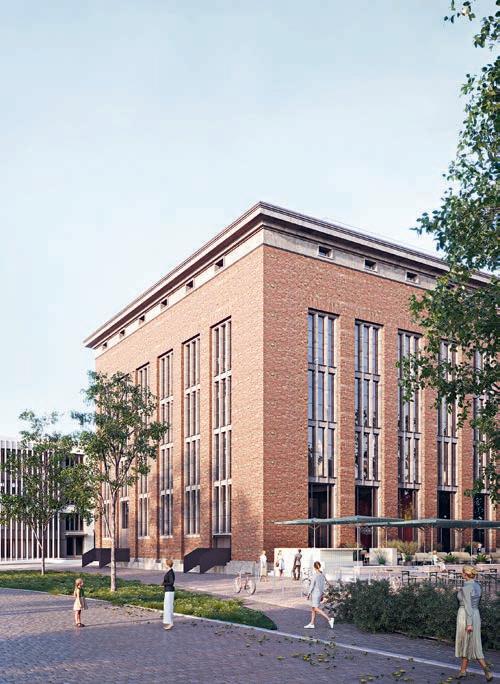
Empowered by: Member of: Sponsors:









Creative Explorer:
Media Partners:

Service Partners:
bayern design is the driving force behind the munich creative business week, or mcbw. We have organized the Munich-based design week, Germany’s largest design event, since 2012. We are the international center of excellence for design-related knowledge transfer and collaboration in Bavaria. What does that involve? We create communication and events on design-relevant themes from AI and brand building to circular economy, and stage exhibitions, trade show appearances, panel discussions and workshops. At our two locations in Nuremberg and Munich, our interdisciplinary team pours its passion and commitment into promoting and showcasing design in Bavaria. We spark inspiration, build connections and provide a platform for designers, entrepreneurs and the interested public.
Our goal is to secure international recognition for Bavaria as a center of design-based innovation. How do we do it? We bring together design and architecture, business and politics. We maintain and moderate cross-disciplinary networks and organize events, exhibitions and trade show appearances. We support education and research in the field of design, and we coordinate state-funded design projects. Our center of expertise receives financial support from the Bavarian State Ministry of Economic Affairs, Regional Development and Energy, and bayern design forum e. V., a non-profit support organization founded in 1987 and made up of design-related companies, design agencies, chambers of industry and commerce, universities and universities of applied sciences and arts. What unites us is the conviction that design has a key role to play in mastering economic, technological and social change to create a sustainable future. Read on to find out about our work in practice.
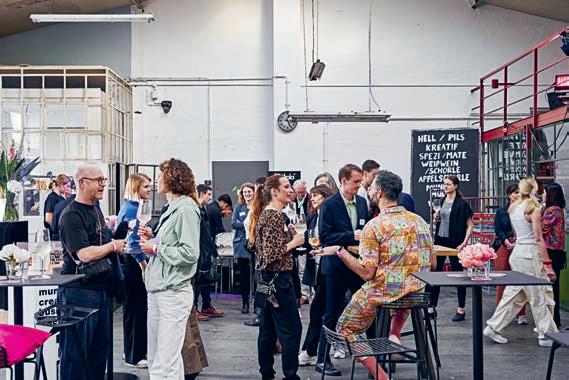
2 locations
14
employees
35
100 % design-oriented years of experience events a year over up to around
40 cooperation partners
500

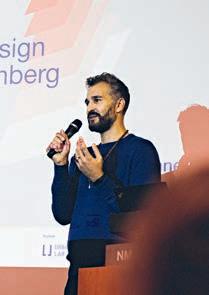
So what does bayern design do?
Exhibitions, fairs, events, workshops, studies – you’ll find bayern design wherever design is of the essence. Here are some of our highlights from 2023.
Our trade fair contribution at the IAA Mobility Summit 2023 in Munich showcased pioneering and sustainable design. The exhibited lightweight material “karuun ® ” is made from the rattan palm. As an innovative and sustainable nature tech material, it creates new design and application possibilities, including in interiors. Rattan is dependent on biodiversity, which is why the cultivation of rattan con -


tributes to the preservation of tropical forests and makes a significant contribution to a modern circular economy. The design studies and components of vehicle interiors on show demonstrate the diverse usability and aesthetic range of this material.
Design is about more than creating nice things for everyday use; it is a way of improving our coexistence. As the first Social Design Days clearly showed. At this event in Nuremberg, we addressed everyday concerns from the world of work. Joint workshops devised promising ideas for career starters, young entrepreneurs and family-run companies. The attendees welcomed the idea of design as an approach fostering constructive and community dialogue. The next event of this kind is planned for fall 2024.
Can we do design management?
How do our companies perform with respect to design management? This question was explored by Professor Jan-Erik Baars from Lucerne University of Applied Sciences and Arts in a wide-ranging study for bayern design. The results concluded that design management skills are currently insufficient. Given that specialists and training courses are few and far between, Baars advises companies to take action on their own account. But the study results also revealed an urgent need to raise awareness of the problem – and here, bayern design can serve as a central point of contact. The full study, entitled “Designfähigkeit,” is available in German on the bayern design website: www.bayern-design.de
The website also contains further information on our activities as well as contact options.
Nadine Vicentini has been Managing Director of bayern design since April 2021. Nadine is familiar with the needs of business and can draw on a wealth of experience from 20 years in the (inter)national creative scene. She is passionate about working to shape the future with creativity and sustainability. Here she reveals what motivates her.
You introduced “design connects” as an overarching concept. Can you tell us more about it?
I found my calling in applying design to tackle challenges. I take inspiration from the idea of design as a discipline that integrates and connects. This was the impetus for our thematic concept of “design connects.”
Why is this understanding of design particularly important now?
NV Times of upheaval need creative ideas, clear communication and emotionally accessible technology. This is where design plays a vital role. I am convinced that design can drive many developments that go beyond isolated, individual fields. My aim is to inform people about this – but most of all, to inspire them.

At bayern design, we’re curious about investigating new trends, topics, developments and collaborations that identify relevant interfaces with design, and spearhead them proactively, expertly and collaboratively in our network.
We believe in the transformative power of design in societal change. Design has the ability to provide vital impetus for sustainable development in business and society.
We are distinguished by our responsible action for society and for the climate. At bayern design, we work hand in hand with our partners and in our team to drive relevant topics.
What values do you feel are expressed in “design connects”?
NV
I believe design is about making mindset visible. At bayern design, we are committed to the values of openness, optimism and responsibility, and take them as our compass for the challenges that lie ahead. This is the mindset that will shape our world of tomorrow.
On the subject of challenge, this year’s mcbw is taking place under the banner of “How to co-create with nature.” Can you explain what that means to you?
NV
We have to learn to work with nature, not against it. In terms of the design process, that means adopting an open, interdisciplinary way of thinking and taking responsibility for the environment. And that comes back to design as a discipline that transcends borders, an element that builds bonds between nature and humans, humans and technology. Design connects.
Our panel of experts discusses this year’s motto, “How to co-create with nature.”
Which nature are we talking about? That green stuff outdoors, so good for chilling and switching off, birdwatching and forest bathing? Or our human nature, which all too often seems to forget we’re part of the ecosystem too – admittedly a pretty privileged part at the top of the food chain, but by no means set apart from other species? This schizophrenic thinking is nothing new. The modern age has been particularly egregious in viewing nature as a cheap source of raw materials and a convenient garbage dump. But we no longer have the excuse that we didn’t know about the disastrous consequences of over-exploitation. By the COVID-19 pandemic at the latest, it was clear that not even humans can cut themselves off from the rest of the world. But what does design mean in the Anthropocene, the age of human impact, with its soaring average global temperatures?
Will we be able to change course, to design and produce with, and as part of, nature in the future? Will this involve imposing restrictions on ourselves? Or
could we even copy nature’s own processes and, instead of creating waste, simply make products that can perpetually be repaired and eventually serve as material resources for new products?
This question was put to a panel of experts from research, business and professional organizations. Here are some of their conclusions.
The issue was a fundamental assessment: are nature and culture truly (still) contradictory areas, and design a discipline that, as a part of culture, is in opposition to nature by definition? Any examination of nature thus becomes an examination of our own role. For millennia, humanity battled to secure harvests, build roads and bridge rivers. In short, to subdue nature. The modern age took this to its logical conclusion. But a new mindset is emerging in the face of species extinction, climate change and dwindling resources. Human centered design was yesterday. Today, the focus is about planet centered design.
This shift in perspective is bringing change to companies. Where products and services are designed in alignment with nature, the focus shifts from functionality to joy of use, and finally to endto-end analysis of the whole life cycle. We need to design the underlying processes in such a way that we know where the components come from, and where they end up. The process chain starts with the raw materials and the question of how elements come together to form a product, and extends across the planned life cycle of the objects. But also beyond: what happens afterwards? Can the products be recycled? Or do they even have a second life? What services are involved in that idea? Will the future see us leasing or renting cars or furniture? Many of these considerations are currently being incorporated into companies’ ESG strategies. Standing for “environmental, social and governance,” the abbreviation describes companies’ level of social engagement and responsibility. It takes in proactive climate protection, but also anti-corruption actions. It is to be hoped that ESG will not soon go the way of “sustainable” – in common parlance, but all too often a mere buzzword in a sales brochure. Is it a slogan? A pale imitation? Or is it, after all, an active reconsideration of company processes in practice? Which may involve rethinking things from the ground up and accepting that role with some humility.
Wellbeing is set to take on a higher status, on equal footing with functionality or efficiency. Both personal and professional environments are already seeing this growing trend, where wellbeing and mindfulness are accorded greater importance than, say, efficient use of space. But increasingly exacting demands concerning space, diversity and haptics can often be traced to a longing for unspoilt nature. Modern workplaces thus make use of nature, from cultivating a focus on living plants (biophilia) to merging indoor and outdoor spaces. Parallels with nature are highly sought after, hence the use of natural materials and fibers, natural forms and color palettes that can change the atmosphere of a space and transform offices into inspiring working environments. In keeping, the character of high-tech products is likely to change. Products of the future will interact with us in a far more natural and matter-offact way while their materials take on the patina of time.
Regardless of whether we strive to overcome the functional separation of urban areas into living, working, recreation and transport or whether we adopt design principles from the natural world in order to minimize material consumption, the key will be for designers to have the right
mindset in the face of a rapidly changing world. They can influence decisions in the same way as companies as a whole. Given this, grassroots pressure is a legitimate approach. Not only different, but better solutions are the goal. Product or automotive design, architecture or communications design: it is no longer enough to simply offer the best products. From now on, design also has the role of educating. It should inform users and encourage them to develop their own mindset. The issue here is not necessarily sacrifice, but new cultural patterns – such as not simply jumping on a plane, such as choosing to repair things or buy second hand. In addition, the esthetic of sustainability is changing, and many sustainably designed objects no longer have an “eco” look even though they are.
Design has always had the role of intermediary between products, codes, mindsets and societal and economic expectations. This will not change. Design is at the interface of changing things and designing processes that shape our consciousness. The aim is to create a new understanding of nature, one that perceives it as a partner, not an enemy. Respect for nature ultimately also means respect for humanity, and has long been equated with social transparency. But this takes courage on a political, social, entrepreneurial and personal level. Courage to take decisions in companies and in societies. We are now in the midst of the process. In the midst of contradictions. Courage is also needed to hold fast in the face of differing opinions. Black and white are gone; we live in a zone of infinite grays, where we are required every day to make decisions that affect not only us, but also all the generations after us.
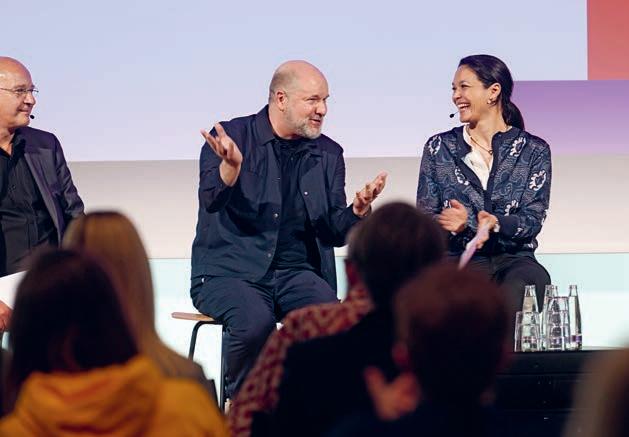
of
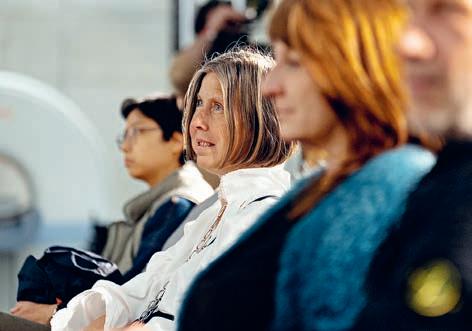
Organizer
The munich creative business week (mcbw) is organized by bayern design GmbH, the competence center for knowledge transfer and collaborations in the field of design in Bavaria. With a host of different projects, it emphasizes the importance of design and its key role in managing economic, social and sustainabie change. It supports the implementation of the Free State of Bavaria's design funding and promotes the networking of designers and stakeholders from all disciplines, companies, universities, institutions and associations. The programs of bayern design GmbH are supported by the Bavarian State Ministry of Economic Affairs, Regional Development and Energy. mcbw is additionally funded by the City of Munich. The BMW Group, Steelcase, Ströer, as well as Gmund provide substantial support as mcbw partners.
Publisher
Nadine Vicentini
Managing Director of bayern design GmbH
Authors Oliver Herwig, www.oliver-herwig.de bayern design
hw.design, Frank Wagner und Sigmund Perner
Concept, Editorial work, Design hw.design
Türkenstraße 55 – 57 80799 Munich www.hwdesign.de
Artwork und lithography
Oliver F. Meier
Production
Katja Knahn, www.paperkate.de
Paper
Cover: Lakepaper white matt, 300g/m² Pages: 135g/m²
Printing and binding Gotteswinter und FIBO Druck- und Verlags GmbH Munich
Editor Mirko Partschefeld, www.lectorare.de
Translator Alison Moffat-McLynn, www.englischersprachdienst.de
Press office
Patricia Biebrich
NICKL PR
Goethestraße 25 A 80336 Munich
Phone + 4 9 89 4807103
E-Mail pressoffice@mcbw.de
When using image and text data, kindly send us a link or a specimen copy by post or PDF.
Info mcbw www.mcbw.de
www.instagram.com/munich_ creative_business_week
LinkedIn www.linkedin.com/showcase/ munich-creative-business-week/
Info bayern design www.bayern-design.de
www.instagram.com/ bayern designconnects
www.linkedin.com/ company/bayern-design-gmbh/
Photo credits
All image rights remain with the respective partners, except: p. 4 – 5: mcbw / LÉROT; p. 10: Stefano
Boeri / Giovanni Gastel, p. 13: Giovanni Nardi, p. 14: PaoloRosselli; p. 2 0: Fraunhofer Netzwerk “Wissenschaft, Kunst und Design” / YDROPONDESK, Katrin Petroschkat 2023; p. 2 2: BHB Unternehmensgruppe / DAS KLEINOD; p. 28 – 32: S tröer Media / Ströer Media Creation; p. 4 2: Ho chschule München Design Faculty / Jana Schwerdtfeger, p. 4 4: Sue Barr, p. 4 5: Angela Stellmacher, p. 4 6: A ngelika Bals, Finja Beck; p. 48 – 52: BMW AG; p. 56: Steelcase / E ye am Chris; p. 74: City of Munich Department of Urban Planning and Building / Mic hael Nagy; p. 77 top: allmannwappner / Studio Vulkan / Urban Standards, p. 77 bottom: airgonautics gbr; p. 7 8: Burkhard Mücke; p. 8 0: Goethe-Institut: Nadine Abdallah; p. 8 2: Drees & Sommer: Peter Neusser; p. 9 0: IUD Institut für Universal Design / Daniel George; p. 92: prettygoodideas / Julia Romeiß; p. 100: Latent / Cristopher Civitillo; p. 106 – 107: MUCBOOK / Ramon Brussog, p. 108: Benjamin Heinz, p. 110: Karolina Jakovljevic; p. 122 – 123: Team of Excellence for the Cultural and Creative Industries, City of Munich / M anu Theobald, p. 124: Maximilian Sydow; p. 133: bayern design / Becker Lacour, p. 134: Sven Stolzenwald, Maria Bayer, Laura Kniesel, p. 135: Becker Lacour, p. 137: Becker Lacour, p. 141: LÉROT
We apologise if, despite careful research, not all image sources may have been named in full.
GRAPHIC DESIGN
TYPOGRAPHY
PHOTOGRAPHY
ILLUSTRATION
VISUAL CULTURE


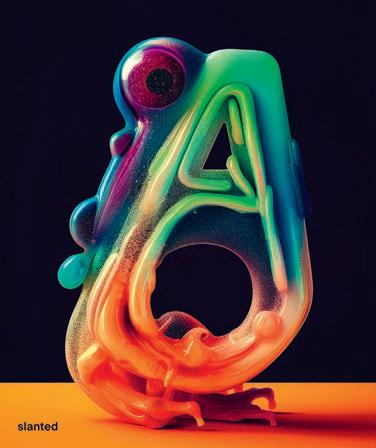

mcbw.de/en #designconnects